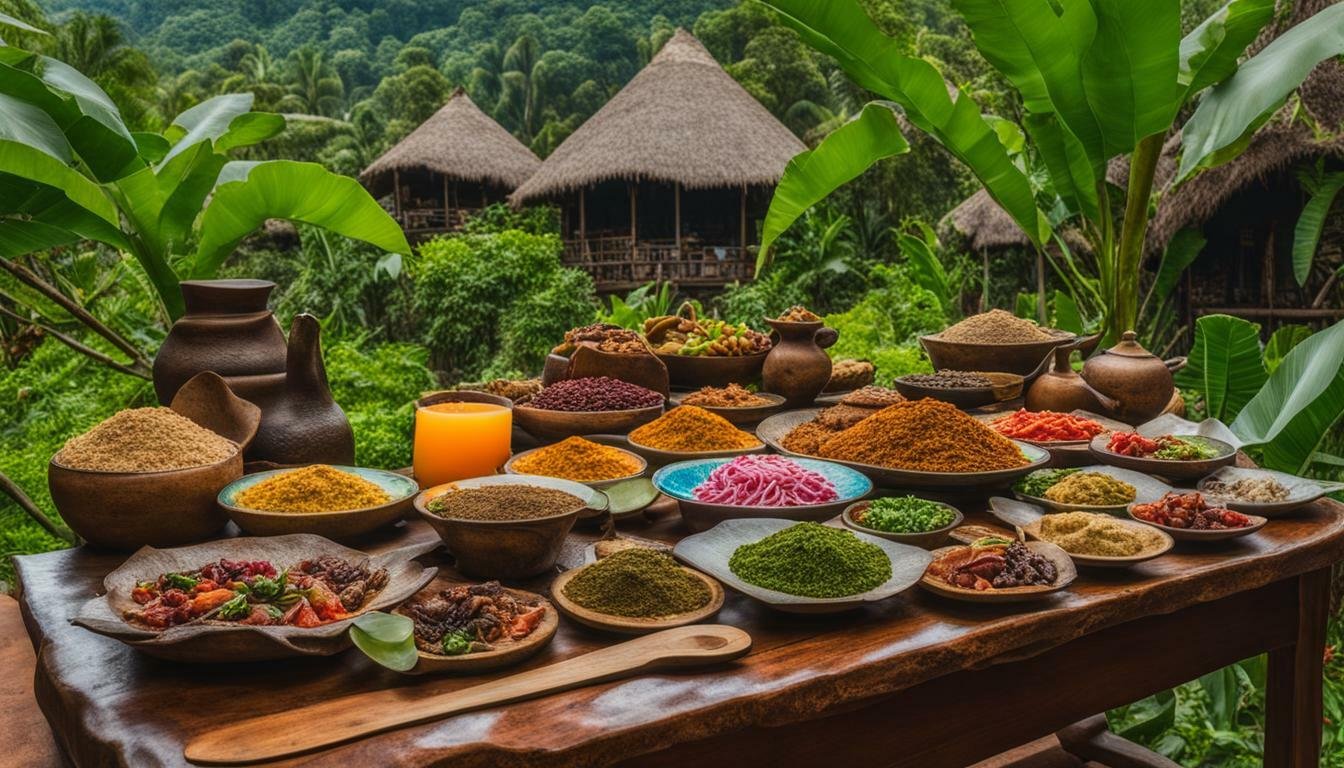Take Me to The Recipes
Madagascar, the island nation off Africa’s southeastern coast, isn’t just a haven for lemurs and baobabs. It’s a treasure trove of unique flavors waiting to tantalize your taste buds! Embark on a culinary adventure with us as we explore the fascinating cuisine of Madagascar.
Unveil the Spice Trail Secrets: Discover how ancient trade routes influenced Madagascar’s cuisine, bringing in exotic spices like vanilla, ginger, and cloves. Learn how these flavors intertwined with local ingredients to create dishes bursting with character.
From Mountains to Coasts: Explore Regional Delights: Dive into the diverse culinary landscape shaped by Madagascar’s varied geography. Savor hearty stews from the highlands, indulge in seafood specialties from the coast, and uncover hidden gems from each region.
Beyond Vanilla: Embrace Local Flavors: Forget the stereotypes! Madagascar’s cuisine offers so much more than just vanilla. Delve into dishes like Romazava (tomato and zebu stew), Ravitoto (pork with cassava leaves), and Masikita (grilled skewers), each bursting with unique and vibrant flavors.
A Culinary Journey You Won’t Forget: This isn’t just a food article; it’s a cultural immersion. Learn about the traditions and stories behind each dish, gaining a deeper appreciation for Madagascar’s rich heritage.
Ready to Spice Up Your Life? So, are you ready to embark on this delicious journey? Join us as we explore the hidden culinary gems of Madagascar! With mouthwatering recipes, insightful cultural connections, and stunning visuals, this article will leave you hungry for more.
Key Takeaways:
- Madagascar cuisine offers a diverse range of flavors and ingredients
- Traditional Madagascan dishes include Romazava and Akoho sy Voanio
- Food plays an important role in Malagasy celebrations and rituals
- Madagascan cuisine uses local spices and cooking techniques to create delicious meals
- Don’t miss this culinary journey!
Take Me to The Recipes
Where is Madagascar?

Madagascar is the world’s fifth largest island, situated in the Indian Ocean off the coast of southern Africa.

Index to the Articles
- Take Me to The Recipes
- More Articles
- Interesting Facts About Madagascar
- Madagascar’s History and the Affect It Has Had on the Cuisine
- What impact has the Climate and Geography had on Malagasy Food?
- Uncovering the Essence of Madagascan food Culture
- How Healthy is Madagascan Food?
- The Importance of Food in Malagasy Culture
- Exploring the Flavors of Madagascar cuisine: Ingredients and Techniques
- Popular Madagascan Dishes
- The Madagascan National Dish
- Traditional Madagascan food Dishes: A Culinary Adventure
- Recipes you can Try at Home
- Conclusion
- FAQ’s
You may also be Interested in the Following Articles
- North and South American Cuisine – A Culinary Expedition
- Europe Cuisine: Savor the Continent’s Best Culinary Secrets!
- African Cuisine: Discover the Bold Flavors & Global Charm!
- Asian Cuisine Unlock its Secrets – Taste, Health & Global Influence!
Savor iconic Madagascan Recipes – Click on each tantalizing Image to open up the Recipe

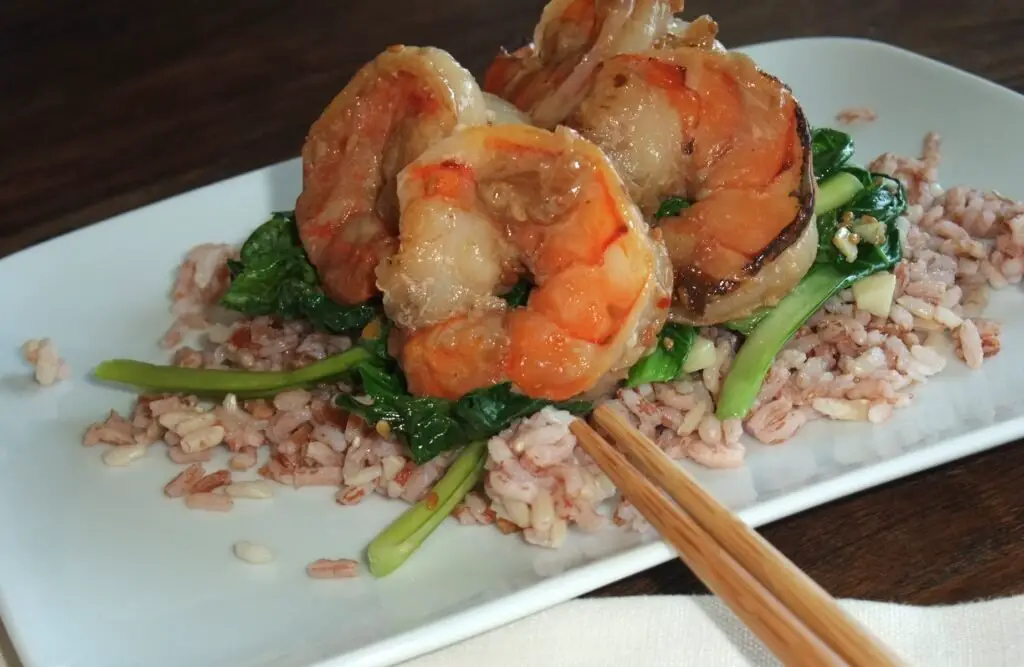
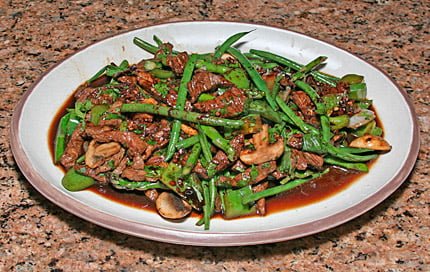

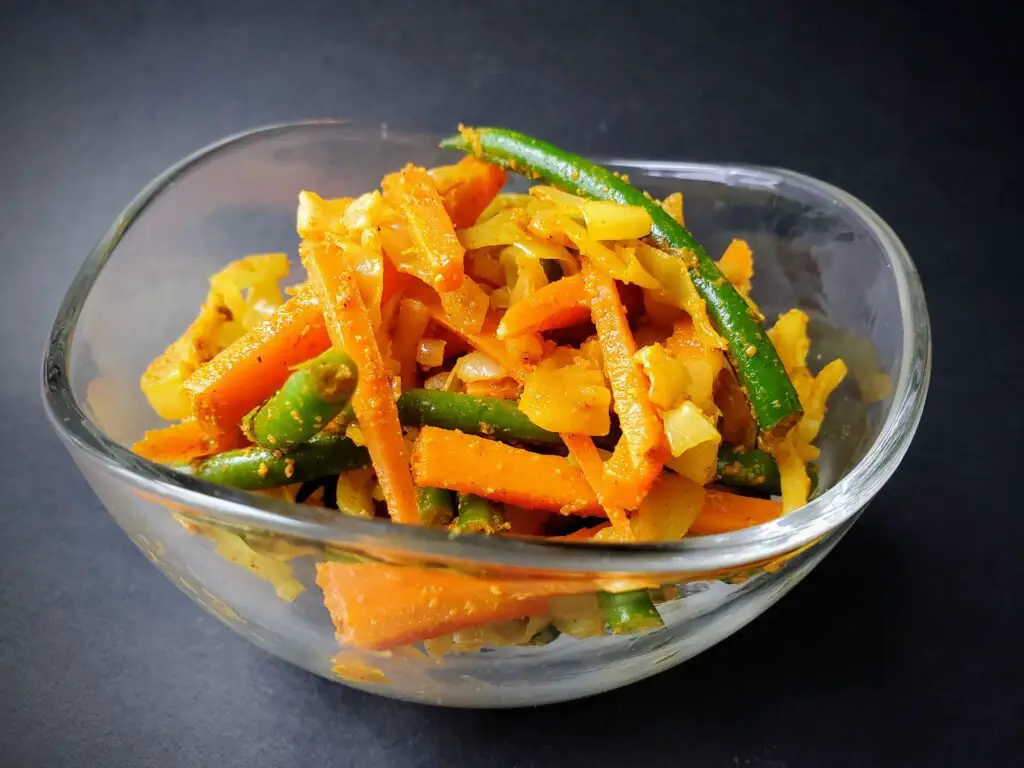

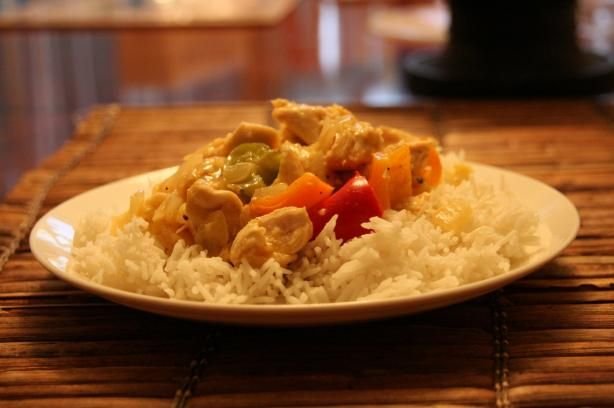
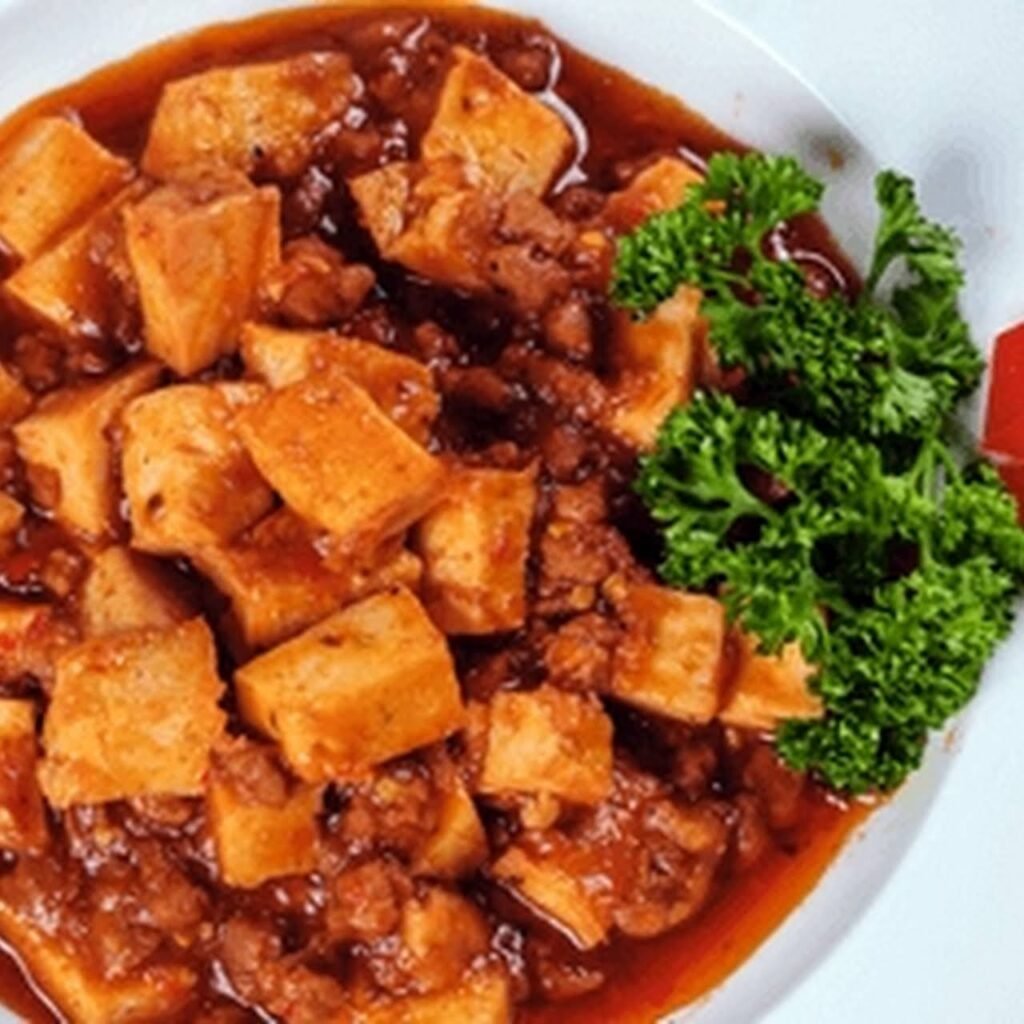
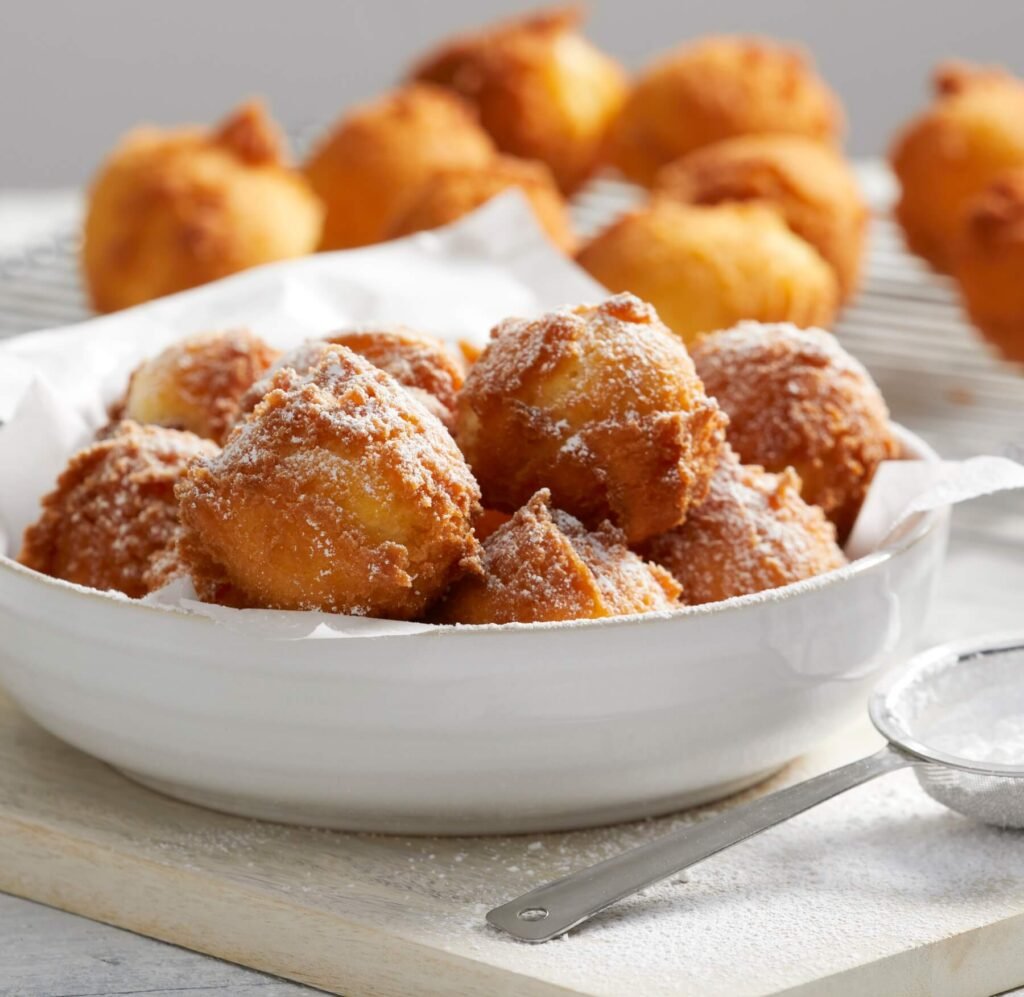
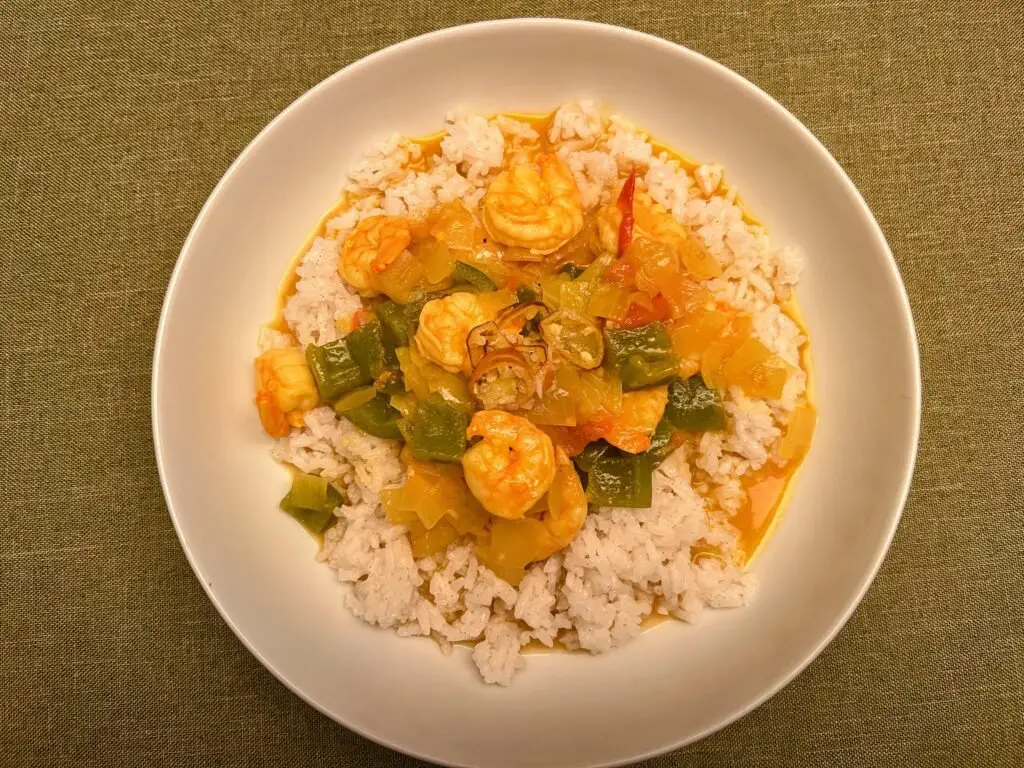

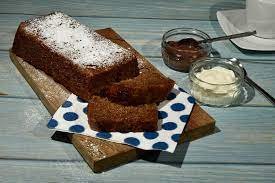
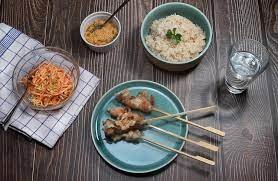



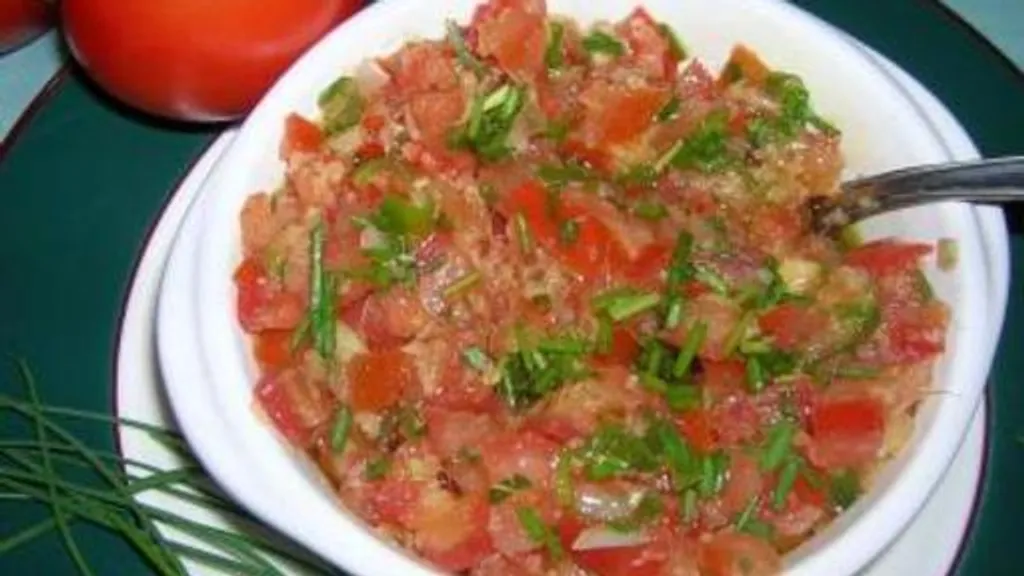

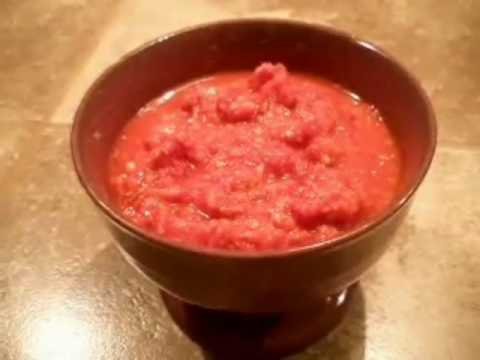
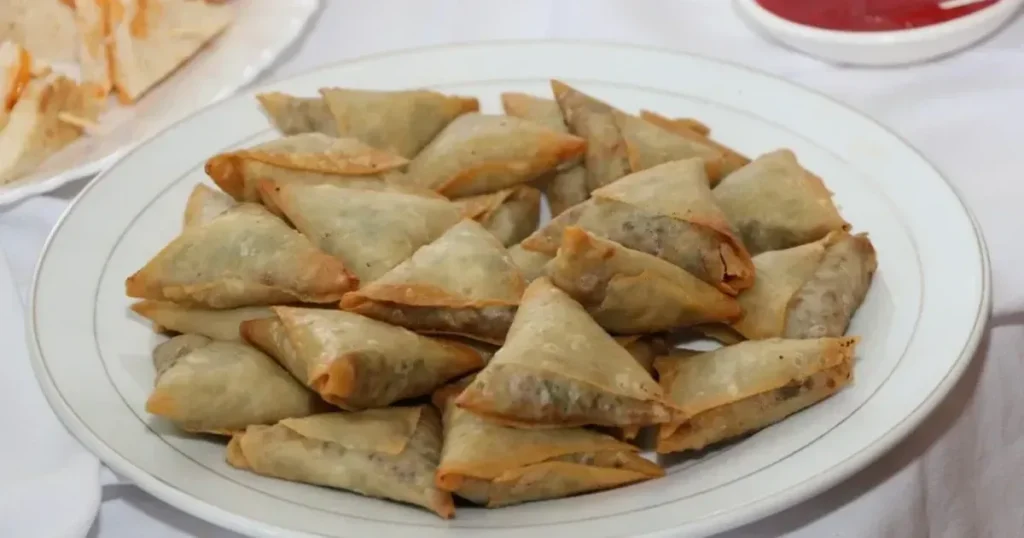
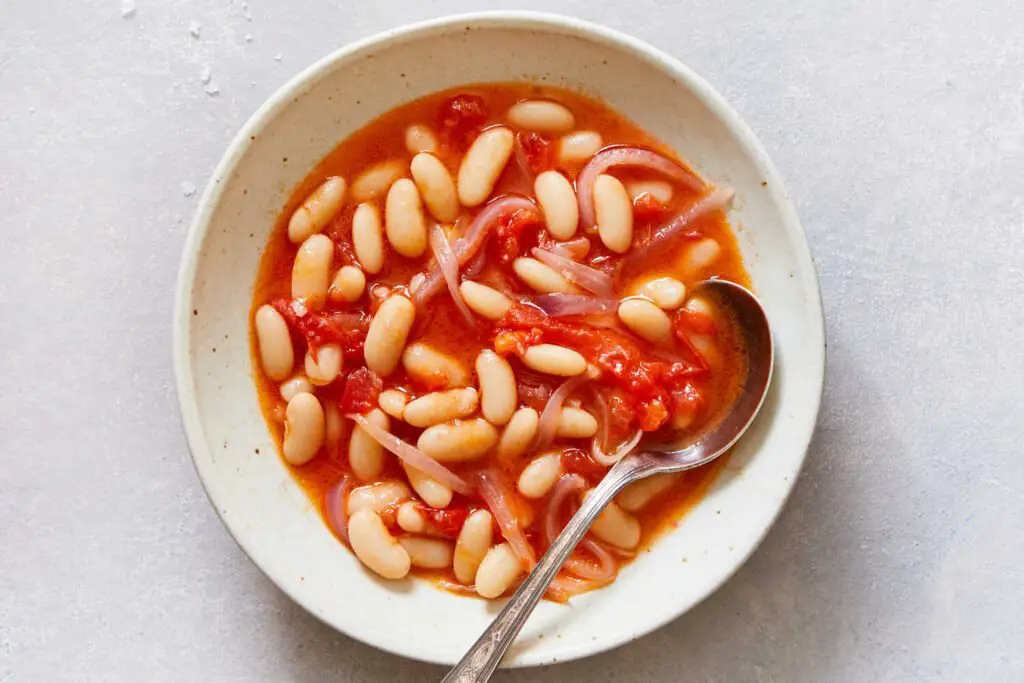
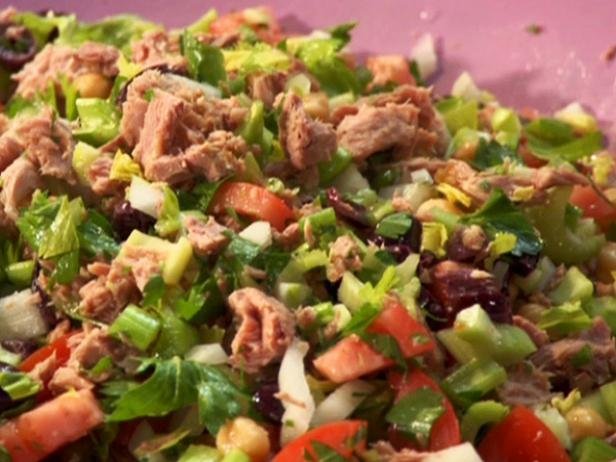
Interesting Facts About Madagascar
Unique Wildlife

Madagascar is home to some of the world’s most peculiar wildlife, including lemurs. About 90% of the wildlife found in Madagascar can’t be found anywhere else on Earth.
Upside-Down Trees

The Baobab trees in Madagascar are often called the “Upside-Down Trees” due to their unique appearance, with branches resembling roots.
Longest Place Name
Madagascar has one of the longest place names in the world – “Antananarivo,” the capital city, which is often shortened to “Tana.”
Cuisine with a Kick
Malagasy cuisine can be quite spicy, but one of the strangest traditional dishes is “Foza sy hena-kisoa,” a spicy soup made with pork and jumping lemurs.
Avenue of the Baobabs

Madagascar boasts an enchanting natural landmark known as the “Avenue of the Baobabs,” a dirt road lined with majestic and towering Baobab trees, creating a surreal landscape.
Fady
Malagasy culture includes a concept called “Fady,” which are traditional taboos. Some areas consider it taboo to point at tombs, and in others, it’s taboo to whistle at night.
Pirates’ Haven
The island was historically a haven for pirates. The famous pirate Captain Kidd and others were said to have used Madagascar as a base for their operations.
Giant Chameleons

Madagascar is home to some of the world’s largest chameleons, including the Parson’s chameleon, which can grow up to 27 inches long.
Tropical Cyclones
Madagascar experiences a high frequency of tropical cyclones. It holds the record for being hit by more tropical cyclones than any other landmass.
Red Soil Landscapes

The soil in many parts of Madagascar is bright red, creating stunning landscapes. The color comes from the high iron content in the soil.
These fascinating and sometimes quirky facts showcase the uniqueness of Madagascar, from its exceptional wildlife to its intriguing cultural traditions and landscapes.
Madagascar’s History and the Affect It Has Had on the Cuisine

Madagascar, the world’s fourth-largest island, possesses a culinary tapestry as unique and vibrant as its famed biodiversity. Its gastronomic identity has been carved by millennia of migration, trade, and colonization, making it a delectable intersection of global influences.
The country has a history shaped by a diverse range of influences, including migration, colonization, and trade. Each historical period has left an indelible mark on the country’s culture, including its unique and varied cuisine.
Pre-Colonial Period (before 1500)
Madagascar was initially settled by Austronesian and East African communities.
The culinary landscape was shaped by indigenous ingredients like rice, fruits, vegetables, and various seafood.
Arab and Persian Influence (7th – 15th Century)
Arab and Persian traders introduced spices, including cloves and cinnamon, which became integral to Malagasy cuisine.
Techniques like marination and the use of certain spices were likely influenced during this period.
European Exploration (1500s – 1800s)
Portuguese explorers visited Madagascar, contributing to the introduction of new crops like maize and cassava.
Dutch and French influence during the 17th and 18th centuries played a role in shaping the agricultural practices and introducing livestock such as cattle.
French Colonial Period (1896 – 1960)
This period significantly impacted Madagascar’s culinary scene. Culinary techniques were introduced from France, leading to the incorporation of methods like sautéing and baking.
European vegetables, dairy products, and pastries became more common.
Post-Independence (1960 – Present)

Madagascar gained independence from France in 1960, and the post-colonial period saw a resurgence of traditional Malagasy ingredients and cooking methods.
The blending of French and traditional Malagasy flavors continued, resulting in unique dishes.
Staple foods such as rice, meat, and seafood remained central to the cuisine.
Contemporary Global Influences (Late 20th Century – Present)
Globalization has led to increased access to a wide array of ingredients and culinary styles. Fast food and convenience foods have become more prevalent, particularly in urban areas.
Tourism has introduced the Malagasy palate to international cuisines, leading to fusion dishes and the incorporation of diverse culinary elements.
Despite the influence of various historical periods, Malagasy cuisine retains its authenticity, with a focus on locally sourced ingredients and traditional cooking methods. Staples like rice, zebu meat, and tropical fruits continue to form the backbone of Malagasy dishes, providing a culinary journey that reflects the island’s rich history and cultural diversity.
What impact has the Climate and Geography had on Malagasy Food?
Climate and geography play a crucial role in shaping the food culture of Madagascar. Let’s delve into the impact of these factors:
Madagascar’s Climate

Droughts have significantly affected Madagascar’s food security. Over the past six years, five out of six rainy seasons have been poor or very bad, leading to vegetation stress and crop failures.
Seasonal rainfall, which typically occurs from October to May in southern Madagascar, has been consistently low since 2015. These dry conditions have strained agricultural productivity and availability of food resources.
Extreme weather events in the Indo-Pacific region, such as El Niño, La Niña, and the Indian Ocean Dipole, have disrupted rainfall patterns over eastern and southern Africa. These events occur when specific parts of the ocean become exceptionally warm.
The resulting shifts in wind patterns can either enhance or hinder rainfall, impacting crop yields and food production.
Madagascar’s Geography

Madagascar’s unique geographical features contribute to its food diversity:
Isolation
As an island nation, Madagascar has been relatively isolated from mainland Africa and other continents. This isolation has preserved traditional culinary practices and allowed for the development of distinct Malagasy flavors.
Biodiversity
The island’s rich biodiversity provides a wide variety of ingredients. From tropical fruits like mangoes, pineapples, and bananas to unique spices and herbs, Malagasy cuisine draws from its natural surroundings.
Rice Cultivation
Rice is a staple in Madagascar, and the island’s terraced rice paddies are a testament to its importance. The cultivation of rice is deeply intertwined with Malagasy culture and livelihoods.
Seafood
Given its coastal location, seafood plays a significant role in Malagasy diets. Fish, shrimp, and other marine delicacies feature prominently in local dishes.
Madagascar has a Food Crisis
Madagascar currently faces a severe food crisis, with tens of thousands of people suffering from “catastrophic” hunger levels.
The UN has even labeled it the world’s first “climate change famine.” Repetitive drought shocks, exacerbated by climate variability, have led to vegetation stress and reduced agricultural productivity.
In summary, the interplay of climate patterns, geographical isolation, and unique ecosystems shapes Malagasy food traditions and challenges its food security. Efforts to address climate change and promote sustainable agriculture are crucial for ensuring a resilient food system in Madagascar.
References
Uncovering the Essence of Madagascan food Culture
Madagascan cuisine is a fascinating blend of flavors and ingredients. The island’s culture and history form the backbone of the cuisine. To truly appreciate this, it is essential to understand the cultural aspects that shape it. In this section, we’ll delve deeper into the traditional Malagasy recipes and the food culture that makes them so unique.
The Ingredients of Madagascan food Cooking

An array of cultures, such as Chinese, African, and European leave their mark on Malagasy cuisine.
The most common ingredients used in Malagasy cooking include
- Rice
- Seafood
- Vanilla
- Cinnamon
- Cloves.
Rice, in particular, is a staple food in Madagascar. Chefs serve it with a variety of meats, vegetables, and sauces.
Another ingredient often used in traditional Madagascan food recipes is the cassava plant, a starchy root vegetable that is used in various dishes such as the famous Ravitoto – a stew made with cassava leaves and pork.
The recipes frequently use Coconut milk, which adds a creamy texture to dishes such as Akoho sy Voanio- a chicken dish with coconut milk and spices.
The Importance of Food in Malagasy Culture
Food plays a significant role in Malagasy culture, serving as a symbol of hospitality and generosity. An essential part of daily life is sharing a meal with family and friends. Generations pass traditional Madagascan food recipes through generations.

Food is also a vital component of Malagasy celebrations and rituals. For example, the Famadihana is a traditional Malagasy ceremony where families gather to honor their ancestors. During the ceremony, a feast is held and traditional Madagascan food dishes are served in abundance to celebrate and show respect for the deceased.
Traditional Malagasy recipes and food culture are an integral part of Madagascar’s identity and heritage. By exploring the ingredients and cultural aspects that shape Malagasy cuisine, we can gain a deeper appreciation for the unique flavors and culinary traditions that make it so special. Join me in the next section as we discover the diverse range of flavors and cooking techniques used in Madagascan cuisine.
How Healthy is Madagascan Food?
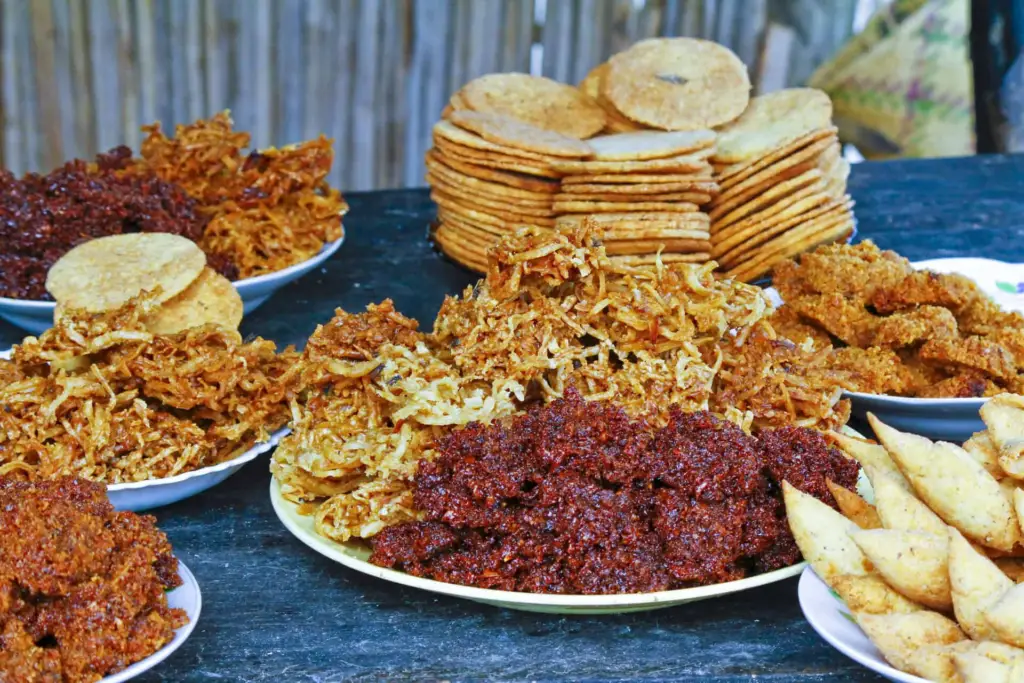
Madagascan food, like the cuisine of many nations, offers a mix of healthful and indulgent options. The healthiness of Madagascan food depends on the specific dishes consumed and individual dietary choices. Here are some aspects to consider:
Healthy Aspects
Rice as a Staple
Rice is a staple in Madagascan cuisine, providing a good source of energy.
It is often accompanied by vegetables, lean meats, and legumes, contributing to a balanced meal.
Fresh Produce
The cuisine incorporates a variety of fresh fruits and vegetables, providing essential vitamins and minerals.
Locally grown produce contributes to a diet rich in fiber and antioxidants.
Seafood
Coastal regions benefit from a variety of seafood options, offering lean protein and omega-3 fatty acids.
Fish and shellfish are often grilled or prepared in traditional stews.
Limited Processed Foods
Traditional Malagasy cuisine relies less on heavily processed foods.
Meals are often prepared using fresh, locally sourced ingredients.
Considerations
Use of Fats and Oils
Some traditional dishes may include cooking oils or fats.
While coconut oil is commonly used, moderation is key due to its high saturated fat content.
Diversity in Meat Choices
Zebu meat (cattle native to Madagascar) is a common protein source, but it tends to be lean.
Excessive consumption of processed or fatty meats may affect the overall healthiness.
Challenges
Nutrient Gaps
The availability of certain nutrient-dense foods may vary, potentially leading to nutrient gaps in some diets.
Addressing these gaps may require diversifying food choices.
Limited Access to Healthcare
Socioeconomic factors can impact access to healthcare and nutritional information, influencing overall health outcomes.
In summary, Madagascan food can contribute to a healthy diet when balanced with a variety of nutrient-rich foods. Embracing the traditional elements of the cuisine, such as rice, fresh produce, and seafood, while being mindful of portion sizes and cooking methods, can contribute to a wholesome and nutritious diet.
Additionally, consulting with healthcare professionals and local nutritionists can provide personalized insights based on individual health needs.
Exploring the Flavors of Madagascar cuisine: Ingredients and Techniques

Madagascan cuisine is known for its unique and vibrant flavors, which are derived from a range of ingredients and cooking techniques. Let’s take a closer look at some of the popular flavors and techniques used in Malagasy cooking.
Flavors of Madagascan food
The flavors of Madagascar are diverse, with a mix of sweet, salty, and spicy. One of the most popular ingredients used in Malagasy cuisine is vanilla, which is known worldwide for its rich and luxurious flavor.
Other ingredients commonly used in Malagasy cooking include ginger, lemongrass, coconut milk, and local spices such as cloves and turmeric. Malagasy dishes are also known for their unique combination of sweet and savory flavors, such as the Koba, a sweet treat made with bananas and peanuts.
Cooking Techniques in Madagascan food
Malagasy cooks have developed a range of cooking techniques to bring out the best flavors in their dishes. One of the traditional cooking methods used in Madagascar is the use of a brick stove, or a fournaise, which is fueled by charcoal.
This method allows for a slow, even heat that brings out the flavors of the ingredients and creates a delicious, smoky taste.
Another popular cooking technique is the use of a mortar and pestle to grind spices and herbs, releasing their full flavor and aroma.

| Popular Flavors of Madagascan food | Cooking Techniques in Madagascan food |
|---|---|
| Vanilla | Use of a brick stove, or a fournaise |
| Ginger | Use of a mortar and pestle to grind spices and herbs |
| Lemongrass | |
| Coconut Milk | |
| Cloves | |
| Turmeric |
Whether you’re a seasoned food lover or an adventurous eater, exploring the unique flavors and techniques of Madagascar is sure to be a culinary adventure you won’t forget.
Traditional Madagascan food Dishes: A Culinary Adventure

In this section, let’s take a closer look at some of the most authentic Madagascan recipes that have stood the test of time. The island of Madagascar is famous for its unique cuisine that blends African, Asian, and European influences.
From savory stews to sweet treats, Malagasy cuisine offers a wide range of flavors that are sure to satisfy any palate.
Authentic Madagascan food Recipes
One of the most popular Madagascan food dishes is Romazava, a hearty beef stew flavored with local greens such as cassava leaves and mustard greens. The meat is slowly simmered with onions, garlic, ginger, and tomatoes until it becomes tender and juicy.
The addition of local greens gives the stew a unique taste that is both savory and slightly bitter.
Another famous Madagascan dish is Akoho sy Voanio, a delicious chicken dish that uses coconut milk as a base and is seasoned with spices such as garlic, ginger, and turmeric. The chicken is simmered in the spiced coconut milk until it becomes tender and absorbs the flavors of the sauce.
The dish is typically served with steamed rice, which complements its rich and creamy taste.
Popular Madagascan Dishes
Besides the iconic Romazava and Akoho sy Voanio, there are many other popular Madagascan dishes that are worth trying. For example, Lasary Voatabia is a simple but flavorful salad made with sliced tomatoes, onions, and cucumber, dressed with a vinaigrette made with lime juice, olive oil, and garlic. This refreshing dish is perfect for hot days and pairs well with grilled meat and seafood.
Another beloved Madagascan cuisine is Ravitoto, a pork and cassava leaf stew that is traditionally served with rice. The dish is famous for its spicy and pungent taste that is sure to fire up your taste buds. To make Ravitoto, diced pork is first browned and then stewed with cassava leaves, red chili peppers, and ginger until it becomes tender and fragrant.
Famous Madagascan Food
If you have a sweet tooth, then Koba is the perfect Madagascan treat for you. Koba is a sticky dessert made with mashed bananas, ground peanuts, and sugar, wrapped in banana leaves and steamed until it becomes soft.
The dessert has a unique texture that is chewy and slightly crunchy, and its sweet and nutty flavor is sure to satisfy your cravings.
Another famous Madagascar cuisine is Mofo Akondro, a banana fritter that is commonly found in street markets and roadside stalls. The fritter is made with mashed ripe bananas, flour, sugar, and baking powder, and is deep-fried until it becomes golden brown and crispy. Mofo Akondro is typically served as a snack or a quick breakfast on the go.
Madagascan cuisine offers a culinary adventure that is both delicious and unique. Whether you prefer savory stews or sweet treats, there is something for everyone in this vibrant and flavorful cuisine. So why not try some authentic Madagascan recipes today and discover the rich tapestry of tastes that this cuisine has to offer?
The Madagascan National Dish

While Madagascar doesn’t have an official national dish, a popular and culturally significant Malagasy dish often considered as a de facto national dish is “Romazava.” Romazava is a traditional Malagasy stew known for its rich flavors and varied ingredients.
It is widely enjoyed across the island and holds cultural significance in Malagasy households.
Madagascan Cuisine – Recipes you can Try at Home
Madagascar Food – Madagascar Chicken

A Culinary Journey to Madagascar: Exploring the Delights of Madagascar Chicken
Welcome to my kitchen, where we embark on a flavorful journey to Madagascar with a dish that captures the essence of Malagasy cuisine – Madagascar Chicken. Rooted in the vibrant culture and rich landscapes of the island, this dish is a celebration of local flavors and traditions.
Join me as we dive into the history and craft a dish that brings the taste of Madagascar straight to your home.
History and Background:
Madagascar Chicken reflects the culinary diversity of the island, blending indigenous ingredients with influences from African, Asian, and European cultures.
The dish showcases the use of aromatic spices and fresh, locally sourced poultry, creating a harmonious fusion that defines the unique Malagasy gastronomy.
Madagascar Food – Madagascar Chicken Ingredients
- 1.5 pounds chicken, cut into pieces
- 2 tablespoons vegetable oil
- 1 onion, finely chopped
- 2 tomatoes, diced
- 3 cloves garlic, minced
- 1 tablespoon ginger, grated
- 1 teaspoon ground turmeric
- 1 teaspoon paprika
- 1 teaspoon ground cumin
- 1 teaspoon ground coriander
- Salt and pepper to taste
- 1 cup coconut milk
- Fresh parsley or cilantro for garnish
Madagascar Food – Madagascar Chicken Recipe
1. Preparation:
- Season chicken pieces with salt, pepper, and ground turmeric.
2. Sautéing:
- In a large pan, heat vegetable oil over medium heat.
- Sauté chopped onions until golden brown.
3. Aromatics:
- Add minced garlic and grated ginger to the pan, stirring until fragrant.
4. Spice Blend:
- Sprinkle ground paprika, ground cumin, and ground coriander over the sautéed ingredients.
5. Chicken Cookery:
- Place the seasoned chicken pieces in the pan, ensuring they are well-coated with the spice mixture.
- Cook until the chicken is browned on all sides.
6. Tomato Tango:
- Introduce diced tomatoes to the pan, allowing them to soften and release their juices.
7. Coconut Magic:
- Pour in the coconut milk, bringing a creamy and luscious texture to the dish.
8. Simmer and Garnish:
- Reduce the heat to low and let the dish simmer for 20-25 minutes until the chicken is fully cooked.
- Garnish with fresh parsley or cilantro before serving.
Serving Information:
- Serves: 4
- Estimated Cooking Time: 45 minutes
Nutritional Information (per serving):
- Calories: 350 kcal
- Protein: 25g
- Fat: 20g
- Carbohydrates: 15g
- Fiber: 3g
Indulge in the exotic flavors of Madagascar Chicken, a dish that encapsulates the warmth and diversity of Malagasy cuisine, right in the comfort of your home!
Madagascar Food – Madagascar Tofu

Exploring Malagasy Flavors: Crafting Madagascar Tofu Delight
Welcome to my cozy kitchen! Today, we’re taking a culinary journey to Madagascar with a plant-based twist – Madagascar Tofu. This dish captures the vibrancy of Malagasy cuisine while celebrating the unique flavors of the island.
Join me as we delve into the history, gather the freshest ingredients, and create a delicious Madagascar-inspired tofu dish that’s perfect for a cozy meal at home.
History and Background:
Madagascar Tofu reflects the island’s culinary tapestry, blending indigenous ingredients with a modern touch. Tofu, a plant-based protein, takes center stage in this dish, offering a wholesome alternative while staying true to the aromatic spices and bold flavors that define Malagasy cooking.
Madagascar Food – Madagascar Tofu Ingredients
- 1 block firm tofu, pressed and cubed
- 2 tablespoons vegetable oil
- 1 onion, finely chopped
- 2 tomatoes, diced
- 3 cloves garlic, minced
- 1 tablespoon ginger, grated
- 1 teaspoon ground turmeric
- 1 teaspoon paprika
- 1 teaspoon ground cumin
- Salt and pepper to taste
- 1 cup coconut milk
- Fresh cilantro for garnish
Madagascar Food – Madagascar Tofu Recipe
1. Preparation:
- Press tofu to remove excess water and cut into bite-sized cubes.
2. Sautéing:
- In a large pan, heat vegetable oil over medium heat.
- Sauté chopped onions until translucent.
3. Aromatics:
- Add minced garlic and grated ginger to the pan, stirring until fragrant.
4. Spice Infusion:
- Sprinkle ground turmeric, paprika, and ground cumin over the sautéed ingredients.
5. Tofu Magic:
- Gently add tofu cubes to the pan, ensuring they are coated with the aromatic spice blend.
- Cook until tofu is golden brown on all sides.
6. Tomato Tango:
- Introduce diced tomatoes to the pan, letting them soften and meld with the tofu.
7. Creamy Coconut Symphony:
- Pour in the coconut milk, bringing a velvety texture to the dish.
- Season with salt and pepper to taste.
8. Simmer and Garnish:
- Reduce heat and let the dish simmer for 15-20 minutes, allowing flavors to meld.
- Garnish with fresh cilantro before serving.
Serving Information:
- Serves: 3-4
- Estimated Cooking Time: 30 minutes
Nutritional Information (per serving):
- Calories: 280 kcal
- Protein: 15g
- Fat: 20g
- Carbohydrates: 12g
- Fiber: 3g
Indulge in the delightful flavors of Madagascar Tofu, a dish that brings the essence of Malagasy cuisine to your table with a plant-powered twist!
Madagascar Food – Malagasy Laoka with Vanilla Rice

Embracing Malagasy Flavors: Savoring Malagasy Laoka with Vanilla Rice
Welcome to my kitchen, where we’re embarking on a flavorful journey to Madagascar with a delightful dish – Malagasy Laoka with Vanilla Rice. This culinary creation is a testament to the vibrant culture and diverse influences that shape Malagasy cuisine.
Join me as we explore the history, gather the freshest ingredients, and craft a unique Malagasy dish that brings warmth and comfort to your home.
History and Background:
Malagasy Laoka is a beloved dish rooted in the heart of Madagascar. The term “laoka” refers to the main dish, and in this recipe, it’s complemented by Vanilla Rice, paying homage to Madagascar’s status as the world’s leading vanilla producer.
The combination of savory and sweet flavors reflects the island’s rich culinary heritage, blending indigenous ingredients with influences from Africa, Asia, and Europe.
Madagascar Food – Malagasy Laoka with Vanilla Rice Ingredients
Malagasy Laoka:
- 1.5 pounds chicken, cut into pieces
- 2 tablespoons vegetable oil
- 1 onion, finely chopped
- 2 tomatoes, diced
- 3 cloves garlic, minced
- 1 tablespoon ginger, grated
- 1 teaspoon ground turmeric
- 1 teaspoon paprika
- 1 teaspoon ground cumin
- Salt and pepper to taste
- 1 cup coconut milk
- Fresh parsley or cilantro for garnish
Vanilla Rice:
- 1 cup jasmine rice
- 2 cups water
- 1 vanilla bean or 1 teaspoon vanilla extract
- 1 tablespoon butter
- Pinch of salt
Madagascar Food – Malagasy Laoka with Vanilla Rice Recipe:
Malagasy Laoka:
1. Preparation:
- Season chicken pieces with salt, pepper, and ground turmeric.
2. Sautéing:
- In a large pan, heat vegetable oil over medium heat.
- Sauté chopped onions until golden brown.
3. Aromatics:
- Add minced garlic and grated ginger to the pan, stirring until fragrant.
4. Spice Blend:
- Sprinkle ground paprika, ground cumin, and ground coriander over the sautéed ingredients.
5. Chicken Cookery:
- Place the seasoned chicken pieces in the pan, ensuring they are well-coated with the spice mixture.
- Cook until the chicken is browned on all sides.
6. Tomato Tango:
- Introduce diced tomatoes to the pan, allowing them to soften and release their juices.
7. Coconut Magic:
- Pour in the coconut milk, bringing a creamy and luscious texture to the dish.
8. Simmer and Garnish:
- Reduce the heat to low and let the dish simmer for 20-25 minutes until the chicken is fully cooked.
- Garnish with fresh parsley or cilantro before serving.
Vanilla Rice:
1. Rinsing and Soaking:
- Rinse jasmine rice under cold water until the water runs clear.
- Soak rice in water for 30 minutes.
2. Cooking:
- In a saucepan, combine soaked rice, water, and a pinch of salt.
- Split the vanilla bean, scrape out the seeds, and add both the seeds and the pod to the rice mixture.
- Bring to a boil, then reduce heat to low, cover, and simmer for 15-20 minutes.
- Stir in butter and fluff the rice with a fork.
Serving Information:
- Serves: 4-5
- Estimated Cooking Time: 45 minutes
Nutritional Information (per serving):
Malagasy Laoka:
- Calories: 350 kcal
- Protein: 25g
- Fat: 20g
- Carbohydrates: 15g
- Fiber: 3g
Vanilla Rice:
- Calories: 200 kcal
- Protein: 4g
- Fat: 3g
- Carbohydrates: 40g
- Fiber: 1g
Indulge in the fusion of savory and sweet with Malagasy Laoka and Vanilla Rice, a dish that encapsulates the heart and soul of Madagascar’s culinary treasures. Enjoy the journey to the flavors of this enchanting island right at your dinner table!
Madagascar Food – Tsaramaso Malagasy (White Bean Tomato Stew)

Unveiling Malagasy Comfort: Tsaramaso Malagasy (White Bean Tomato Stew)
Step into the culinary wonders of Madagascar with a dish that embodies warmth and simplicity – Tsaramaso Malagasy. Originating from the heart of this vibrant island, this White Bean Tomato Stew captures the essence of Malagasy comfort food.
Join me as we delve into the history, gather the humblest ingredients, and create a delightful stew that brings a piece of Madagascar to your home.
History and Background:
Tsaramaso Malagasy has deep roots in the Malagasy culinary heritage, representing a dish enjoyed across households for its wholesome and hearty nature. Born from the fusion of native ingredients and a touch of colonial influence, this stew showcases the simplicity and richness that defines Malagasy cuisine.
Madagascar Food – Tsaramaso Malagasy Ingredients
- 2 cups white beans, soaked overnight
- 2 tablespoons vegetable oil
- 1 onion, finely chopped
- 2 tomatoes, diced
- 3 cloves garlic, minced
- 1 teaspoon ground turmeric
- 1 teaspoon paprika
- 1 teaspoon ground cumin
- Salt and pepper to taste
- 4 cups vegetable broth
- Fresh parsley for garnish
Madagascar Food – Tsaramaso Malagasy Recipe
1. Preparation:
- Rinse and drain the soaked white beans.
2. Sautéing:
- In a large pot, heat vegetable oil over medium heat.
- Sauté chopped onions until softened.
3. Aromatics:
- Add minced garlic, ground turmeric, paprika, and ground cumin to the pot, stirring until fragrant.
4. Bean Addition:
- Introduce the soaked white beans to the pot, ensuring they are well-coated with the aromatic mixture.
5. Tomato Tango:
- Add diced tomatoes, salt, and pepper to the pot, creating a harmonious blend of flavors.
6. Simmering Magic:
- Pour in the vegetable broth, bringing the stew to a gentle simmer.
- Cover the pot and let it simmer for 1.5 to 2 hours, or until the beans are tender.
7. Garnish and Serve:
- Once the beans are cooked, garnish the stew with fresh parsley.
- Serve hot, either on its own or over a bed of rice.
Serving Information:
- Serves: 4-6
- Estimated Cooking Time: 2 hours
Nutritional Information (per serving):
- Calories: 220 kcal
- Protein: 10g
- Fat: 5g
- Carbohydrates: 35g
- Fiber: 8g
Embrace the comforting flavors of Madagascar with Tsaramaso Malagasy, a stew that reflects the heartiness and simplicity of Malagasy home cooking. Gather around the table and savor the taste of this delightful dish that brings a piece of Madagascar to your home.
Madagascar Food – Malagasy Cake

Savoring Sweetness: Exploring the Malagasy Cake
Step into the enchanting world of Malagasy desserts with a delightful creation – the Malagasy Cake. Originating from the heart of Madagascar, this sweet treat embodies the island’s love for vibrant flavors and unique culinary traditions.
Join me as we uncover the history, gather the finest ingredients, and indulge in the art of baking a Malagasy Cake that will transport you to the sunny shores of this beautiful island.
History and Background:
Malagasy Cake holds a special place in Madagascar’s dessert culture. Rooted in French-inspired patisserie brought during the colonial era, the cake has evolved to incorporate local flavors like vanilla and coconut, resulting in a unique fusion that tantalizes the taste buds.
Madagascar Food – Malagasy Cake Ingredients
- 2 cups all-purpose flour
- 1 cup sugar
- 1 cup unsalted butter, softened
- 4 eggs
- 1 cup coconut milk
- 1 teaspoon vanilla extract
- 1 teaspoon baking powder
- Pinch of salt
Madagascar Food – Malagasy Cake Recipe
1. Preheat and Prepare:
- Preheat your oven to 350°F (180°C).
- Grease and flour a cake pan.
2. Creaming Butter and Sugar:
- In a large bowl, cream together softened butter and sugar until light and fluffy.
3. Adding Eggs:
- Add eggs one at a time, beating well after each addition.
4. Flavor Infusion:
- Pour in vanilla extract, mixing it into the batter.
5. Dry Ingredients:
- In a separate bowl, whisk together flour, baking powder, and a pinch of salt.
6. Alternating Mixtures:
- Gradually add the dry ingredients to the wet ingredients, alternating with coconut milk.
- Begin and end with the dry ingredients, ensuring everything is well incorporated.
7. Baking Magic:
- Pour the batter into the prepared cake pan and smooth the top.
- Bake in the preheated oven for 30-35 minutes or until a toothpick inserted comes out clean.
8. Cooling and Serving:
- Allow the cake to cool in the pan for 10 minutes before transferring to a wire rack to cool completely.
- Once cooled, slice and serve.
Serving Information:
- Serves: 8-10
- Estimated Cooking Time: 35 minutes
Nutritional Information (per serving):
- Calories: 300 kcal
- Protein: 5g
- Fat: 18g
- Carbohydrates: 30g
- Sugar: 15g
Indulge in the sweet symphony of Malagasy Cake, a dessert that beautifully blends tradition with a touch of island flair. Bring a slice of Madagascar to your table and savor the magic of Malagasy baking!
Madagascar Food – Rougail Malgache (Recette De Madagascar)

Exploring Malagasy Flavors: Rougail Malgache (Madagascan Tomato Salsa)
Dive into the vibrant world of Malagasy cuisine with a burst of flavors in Rougail Malgache. Hailing from the picturesque island of Madagascar, this zesty tomato salsa has deep roots in the region’s culinary traditions.
Join me as we uncover the history, gather fresh ingredients, and embark on a delightful culinary journey with this authentic Malagasy recipe.
History and Background:
Rougail Malgache is a beloved dish in Madagascar, known for its bold and tangy taste. Originating from the island’s diverse culinary heritage, this salsa reflects the influence of African, Asian, and European flavors, creating a harmonious blend that encapsulates the essence of Malagasy cooking.
Madagascar Food – Rougail Malgache (Recette De Madagascar) Ingredients
- 4 large tomatoes, diced
- 1 onion, finely chopped
- 2 cloves garlic, minced
- 1-2 green chili peppers, finely chopped
- 1 teaspoon ground ginger
- 1 teaspoon ground turmeric
- 2 tablespoons vegetable oil
- Salt and pepper to taste
- Fresh cilantro or parsley for garnish
Madagascar Food – Rougail Malgache (Recette De Madagascar) Recipe
1. Tomato Prep:
- Wash and dice the tomatoes, removing seeds for a smoother texture.
2. Aromatics:
- In a pan, heat vegetable oil over medium heat.
- Sauté chopped onions until golden brown.
3. Spice Fusion:
- Add minced garlic, ground ginger, and ground turmeric to the pan, stirring until fragrant.
4. Tomato Tango:
- Introduce the diced tomatoes to the pan, allowing them to soften and release their juices.
5. Heat Kick:
- Add finely chopped green chili peppers for a spicy kick.
6. Seasoning:
- Season with salt and pepper to taste, adjusting the spice level according to your preference.
7. Simmer and Garnish:
- Let the mixture simmer on low heat for 15-20 minutes, allowing the flavors to meld.
- Garnish with fresh cilantro or parsley before serving.
Serving Information:
- Serves: 4-6
- Estimated Cooking Time: 25 minutes
Nutritional Information (per serving):
- Calories: 40 kcal
- Protein: 1g
- Fat: 3g
- Carbohydrates: 4g
- Fiber: 1g
Embrace the lively flavors of Madagascar with Rougail Malgache, a versatile salsa that adds a burst of Malagasy charm to your table. Whether served with rice, grilled meats, or as a side, this recipe captures the heart of Malagasy culinary traditions.
Madagascar Food – Hen’omby Sy Haricots Verts (Green Beans and Ground Beef)

Savoring Malagasy Comfort: Hen’omby Sy Haricots Verts (Green Beans and Ground Beef)
Welcome to a taste of Malagasy home cooking with Hen’omby Sy Haricots Verts – a comforting dish that combines the freshness of green beans with the heartiness of ground beef. Originating from the enchanting island of Madagascar, this recipe reflects the island’s culinary diversity.
Join me in discovering the history, gathering the ingredients, and creating a wholesome Malagasy dish that brings warmth to your home.
History and Background:
Hen’omby Sy Haricots Verts is a classic Malagasy dish that exemplifies the fusion of local ingredients and international influences. From traditional Malagasy flavors to hints of colonial culinary traditions, this dish represents the heart and soul of Malagasy home cooking, capturing the essence of comfort and simplicity.
Madagascar Food – Hen’omby Sy Haricots Verts Ingredients
- 1 pound green beans, ends trimmed and cut into bite-sized pieces
- 1 pound ground beef
- 1 onion, finely chopped
- 2 tomatoes, diced
- 2 cloves garlic, minced
- 1 teaspoon ground ginger
- 1 teaspoon ground turmeric
- 2 tablespoons vegetable oil
- Salt and pepper to taste
- Fresh parsley for garnish
Madagascar Food – Hen’omby Sy Haricots Verts Recipe
1. Preparation:
- Trim the ends of the green beans and cut them into bite-sized pieces.
- Finely chop the onion, dice the tomatoes, and mince the garlic.
2. Sautéing:
- In a large pan, heat vegetable oil over medium heat.
- Sauté chopped onions until translucent.
3. Aromatics:
- Add minced garlic, ground ginger, and ground turmeric to the pan, stirring until fragrant.
4. Ground Beef Magic:
- Add ground beef to the pan, breaking it apart and cooking until browned.
5. Tomato Tango:
- Introduce diced tomatoes to the pan, letting them soften and release their juices.
6. Green Bean Symphony:
- Add the green beans to the pan, ensuring they are coated with the flavorful mixture.
7. Seasoning:
- Season with salt and pepper to taste, adjusting according to your preference.
8. Simmer and Garnish:
- Let the dish simmer for 15-20 minutes, allowing the flavors to meld.
- Garnish with fresh parsley before serving.
Serving Information:
- Serves: 4-6
- Estimated Cooking Time: 30 minutes
Nutritional Information (per serving):
- Calories: 280 kcal
- Protein: 20g
- Fat: 18g
- Carbohydrates: 12g
- Fiber: 4g
Indulge in the heartiness of Hen’omby Sy Haricots Verts, a dish that encapsulates the warmth and simplicity of Malagasy home cooking. Share the flavors of Madagascar with your loved ones and bring a touch of the island’s culinary charm to your table.
Madagascar Food – Malagasy Vary Amin’anana

Embracing Malagasy Traditions: Malagasy Vary Amin’anana (Rice with Greens)
Embark on a culinary journey to Madagascar with Malagasy Vary Amin’anana, a flavorful dish that combines the staple ingredient, rice, with the freshness of leafy greens. Rooted in the rich culinary traditions of Madagascar, this dish captures the essence of local flavors and the simplicity that defines Malagasy cuisine.
Join me as we explore the history, gather ingredients, and create a dish that pays homage to the island’s vibrant food culture.
History and Background:
Malagasy Vary Amin’anana is a beloved dish in Madagascar, symbolizing the resourcefulness of Malagasy cooking. Rice, a staple in the region, is paired with amin’anana, a type of local leafy green, to create a wholesome and satisfying meal. This dish reflects the island’s agricultural abundance and the ingenuity of combining simple ingredients into a delicious and nutritious dish.
Madagascar Food – Malagasy Vary Amin’anana Ingredients
- 2 cups rice
- 4 cups water
- 1 bunch amin’anana (or substitute with spinach or Swiss chard)
- 1 onion, finely chopped
- 2 tomatoes, diced
- 2 cloves garlic, minced
- 2 tablespoons vegetable oil
- Salt and pepper to taste
Madagascar Food – Malagasy Vary Amin’anana Recipe
1. Rice Preparation:
- Rinse the rice under cold water until the water runs clear.
- In a pot, combine the rice and water. Bring to a boil, then reduce heat, cover, and simmer until the rice is tender.
2. Amin’anana Prep:
- Wash and chop the amin’anana (or alternative greens).
3. Sautéing Aromatics:
- In a separate pan, heat vegetable oil over medium heat.
- Sauté chopped onions until softened, then add minced garlic.
4. Tomato Addition:
- Add diced tomatoes to the pan, cooking until they break down and release their juices.
5. Green Harmony:
- Introduce the chopped amin’anana to the pan, stirring until wilted.
6. Marrying Flavors:
- Combine the sautéed mixture with the cooked rice, ensuring an even distribution of flavors.
7. Seasoning:
- Season the dish with salt and pepper to taste, adjusting according to your preference.
8. Serve and Enjoy:
- Dish out the Malagasy Vary Amin’anana and savor the delightful blend of rice and greens.
Serving Information:
- Serves: 4-6
- Estimated Cooking Time: 30 minutes
Nutritional Information (per serving):
- Calories: 220 kcal
- Protein: 4g
- Fat: 5g
- Carbohydrates: 40g
- Fiber: 2g
Bring a taste of Madagascar to your table with Malagasy Vary Amin’anana, a dish that celebrates the simplicity and freshness of Malagasy ingredients. Enjoy the vibrant flavors and nutritious goodness of this wholesome meal inspired by the culinary heritage of Madagascar.
Madagascar Food – Asian Honey and Lime Prawns with Madagascar Pink Rice

Exotic Fusion Delight: Asian Honey and Lime Prawns with Madagascar Pink Rice
Embark on a culinary adventure with the exquisite blend of Asian and Malagasy flavors in this delectable dish. The Asian Honey and Lime Prawns with Madagascar Pink Rice combine the sweetness of honey, the zing of lime, and the unique nuttiness of Madagascar Pink Rice for a sensational dining experience.
Join me in uncovering the history, gathering the ingredients, and creating this fusion masterpiece that brings the best of both worlds to your table.
History and Background:
This dish represents a delightful fusion of Asian and Malagasy influences. Madagascar’s culinary scene has been shaped by various cultures, and this recipe is a testament to the island’s openness to global flavors. The use of Madagascar Pink Rice adds a local touch, creating a unique dish that harmoniously blends ingredients from different corners of the world.
Madagascar Food – Asian Honey and Lime Prawns with Madagascar Pink Rice Ingredients
Prawns:
- 1 pound large prawns, peeled and deveined
- 2 tablespoons soy sauce
- 2 tablespoons honey
- Juice of 2 limes
- 2 cloves garlic, minced
- 1 teaspoon grated ginger
- 1 tablespoon vegetable oil
- Salt and pepper to taste
Madagascar Pink Rice:
- 1 cup Madagascar Pink Rice
- 2 cups water
- Pinch of salt
Madagascar Food – Asian Honey and Lime Prawns with Madagascar Pink Rice Recipe
Preparing the Madagascar Pink Rice:
- Rinse and Soak:
- Rinse the Madagascar Pink Rice under cold water until the water runs clear.
- Soak the rice in water for 30 minutes.
- Cooking:
- In a pot, combine the soaked rice, 2 cups of water, and a pinch of salt.
- Bring to a boil, then reduce heat, cover, and simmer for 15-20 minutes or until the rice is tender.
Cooking the Asian Honey and Lime Prawns:
- Marinating the Prawns:
- In a bowl, mix soy sauce, honey, lime juice, minced garlic, grated ginger, salt, and pepper.
- Add the prawns to the marinade, ensuring they are well-coated. Let them marinate for at least 15 minutes.
- Searing the Prawns:
- In a pan, heat vegetable oil over medium-high heat.
- Cook the marinated prawns for 2-3 minutes on each side or until they turn pink and opaque.
- Simmering the Sauce:
- Pour the remaining marinade into the pan, allowing it to simmer until it thickens into a glaze.
Serving Information:
- Serves: 4
- Estimated Cooking Time: 45 minutes
Nutritional Information (per serving):
- Calories: 380 kcal
- Protein: 20g
- Fat: 6g
- Carbohydrates: 70g
- Fiber: 3g
Experience the fusion of flavors with Asian Honey and Lime Prawns served over Madagascar Pink Rice. This dish not only tantalizes the taste buds but also showcases the harmonious marriage of global culinary influences on the vibrant island of Madagascar.
Madagascar Food – Manioc Coconut Cake

A Slice of Malagasy Sweetness: Manioc Coconut Cake
Dive into the world of Malagasy desserts with the delightful Manioc Coconut Cake. Rooted in Madagascar’s rich culinary tapestry, this cake offers a taste of the island’s tropical flavors.
Let’s explore the history, gather the ingredients, and embark on a baking journey that brings the sweetness of Madagascar to your home.
History and Background:
Manioc Coconut Cake, locally known as “Mofo Akondro,” is a beloved treat in Madagascar. The cake’s roots trace back to the island’s abundant tropical resources, featuring manioc (cassava) and coconut, which are staples in Malagasy cuisine. This dessert reflects the island’s emphasis on using locally sourced ingredients to create delightful culinary experiences.
Madagascar Food – Manioc Coconut Cake Ingredients
- 2 cups grated manioc (cassava)
- 1 cup grated coconut
- 1 cup sugar
- 1 cup all-purpose flour
- 1 cup coconut milk
- 1/2 cup unsalted butter, melted
- 3 eggs
- 1 teaspoon vanilla extract
- 1 teaspoon baking powder
- Pinch of salt
Madagascar Food – Manioc Coconut Cake Recipe
1. Preheat and Prepare:
- Preheat your oven to 350°F (175°C).
- Grease and flour a baking pan (9×9 inches).
2. Combine Dry Ingredients:
- In a bowl, mix grated manioc, grated coconut, sugar, all-purpose flour, baking powder, and a pinch of salt.
3. Create Batter:
- In a separate bowl, whisk together eggs, melted butter, coconut milk, and vanilla extract.
4. Blend Wet and Dry:
- Gradually combine the wet and dry ingredients, stirring until a smooth batter forms.
5. Bake:
- Pour the batter into the prepared baking pan.
- Bake for 45-50 minutes or until the top is golden and a toothpick inserted comes out clean.
6. Cool and Serve:
- Allow the cake to cool in the pan for 10 minutes, then transfer it to a wire rack to cool completely.
Serving Information:
- Serves: 8-10
- Estimated Cooking Time: 1 hour
Nutritional Information (per serving):
- Calories: 280 kcal
- Protein: 3g
- Fat: 15g
- Carbohydrates: 35g
- Fiber: 2g
Indulge in the sweet simplicity of Manioc Coconut Cake, a dessert that encapsulates the tropical essence of Madagascar. Share this delightful treat with friends and family as you savor the flavors of the island’s culinary heritage.
Madagascar Food – Malagasy Donuts with Lychee and Pistachio Ice Cream

Sweet Delight from Madagascar: Malagasy Donuts with Lychee and Pistachio Ice Cream
Embark on a dessert journey with a Malagasy twist! These delectable Malagasy Donuts with Lychee and Pistachio Ice Cream are a delightful treat that combines the island’s love for sweet indulgence with exotic flavors.
Join me in uncovering the history, gathering the ingredients, and creating a dessert that captures the essence of Madagascar’s culinary charm.
History and Background:
In Madagascar, desserts are a celebration of local ingredients and global influences. These Malagasy Donuts draw inspiration from the island’s vibrant street food culture, where sweet treats are enjoyed with a sense of joy and community. The addition of lychee and pistachio ice cream introduces a touch of luxury, creating a dessert that is both comforting and indulgent.
Madagascar Food – Malagasy Donuts with Lychee and Pistachio Ice Cream Ingredients
Malagasy Donuts:
- 2 cups all-purpose flour
- 1/2 cup sugar
- 2 teaspoons baking powder
- 1/2 teaspoon salt
- 1/2 cup milk
- 2 eggs
- 2 tablespoons unsalted butter, melted
- Oil for frying
For the Lychee and Pistachio Ice Cream:
- 2 cups lychee, peeled and pitted
- 1 cup unsalted pistachios, shelled
- 2 cups heavy cream
- 1 cup whole milk
- 1 cup sugar
- 1 teaspoon vanilla extract
Madagascar Food – Malagasy Donuts with Lychee and Pistachio Ice Cream Recipe
Making Malagasy Donuts:
- Combine Dry Ingredients:
- In a bowl, whisk together flour, sugar, baking powder, and salt.
- Prepare Wet Ingredients:
- In another bowl, whisk together milk, eggs, and melted butter.
- Create Donut Batter:
- Gradually combine the wet and dry ingredients, stirring until a smooth batter forms.
- Fry the Donuts:
- In a deep pan, heat oil for frying.
- Drop spoonfulls of batter into the hot oil and fry until golden brown.
- Remove and drain on paper towels.
Crafting Lychee and Pistachio Ice Cream:
- Prepare the Base:
- In a blender, combine lychee, pistachios, heavy cream, milk, sugar, and vanilla extract.
- Blend until smooth.
- Chill and Freeze:
- Chill the ice cream mixture in the refrigerator for at least 2 hours.
- Transfer to an ice cream maker and churn according to the manufacturer’s instructions.
- Freeze until firm.
Serving Information:
- Serves: 6-8
- Estimated Cooking Time: 2 hours (including chilling and freezing)
Nutritional Information (per serving):
Malagasy Donuts:
- Calories: 180 kcal
- Protein: 4g
- Fat: 8g
- Carbohydrates: 22g
- Sugar: 8g
Lychee and Pistachio Ice Cream:
- Calories: 250 kcal
- Protein: 3g
- Fat: 18g
- Carbohydrates: 22g
- Sugar: 18g
Indulge in the sweet harmony of Malagasy Donuts with Lychee and Pistachio Ice Cream, a dessert that brings together the best of Madagascar’s flavors. Whether shared with loved ones or enjoyed solo, these treats promise a delightful escape to the island’s culinary paradise.
Madagascar Food – Lasary Manga Masiaka (Hot Mango Salad)

Savor the Spice: Lasary Manga Masiaka (Hot Mango Salad) from Madagascar
Get ready for a burst of tropical flavors with Lasary Manga Masiaka, a vibrant Hot Mango Salad that originates from the heart of Madagascar. This zesty salad embodies the island’s culinary spirit, combining the sweetness of ripe mangoes with the heat of local spices.
Join me as we delve into the history, gather the ingredients, and prepare this exotic dish that brings a taste of Madagascar to your home.
History and Background:
Lasary Manga Masiaka has its roots in the diverse food culture of Madagascar. This island nation, located off the southeast coast of Africa, is known for its rich biodiversity and vibrant cuisine. The dish reflects the Malagasy people’s love for bold and contrasting flavors, showcasing the influence of African, Asian, and European culinary traditions that have shaped the island’s gastronomy.
Madagascar Food – Lasary Manga Masiaka Ingredients
- 2 ripe mangoes, peeled and diced
- 1 red onion, finely chopped
- 2 tomatoes, diced
- 1 red chili pepper, finely chopped
- 2 cloves garlic, minced
- 1/4 cup chopped fresh cilantro
- Juice of 2 limes
- 2 tablespoons olive oil
- Salt and pepper to taste
Madagascar Food – Lasary Manga Masiaka Recipe
1. Prepare Mangoes and Vegetables:
- Peel and dice the ripe mangoes.
- Finely chop the red onion and red chili pepper.
- Dice the tomatoes and mince the garlic.
2. Combine Ingredients:
- In a large bowl, combine the diced mangoes, chopped red onion, diced tomatoes, chopped red chili pepper, minced garlic, and chopped cilantro.
3. Prepare Dressing:
- In a small bowl, whisk together the lime juice, olive oil, salt, and pepper.
4. Toss and Coat:
- Pour the dressing over the mango and vegetable mixture.
- Gently toss the ingredients until evenly coated with the dressing.
5. Chill and Serve:
- Allow the salad to chill in the refrigerator for at least 30 minutes before serving.
- Serve the Lasary Manga Masiaka as a refreshing and spicy side dish.
Serving Information:
- Serves: 4-6
- Estimated Prep Time: 15 minutes
- Chilling Time: 30 minutes
Nutritional Information (per serving):
- Calories: 120 kcal
- Protein: 1g
- Fat: 7g
- Carbohydrates: 16g
- Fiber: 2g
Lasary Manga Masiaka is a delightful explosion of flavors that captures the essence of Madagascar. Perfect as a side dish or a light snack, this hot mango salad will transport you to the sunny shores of this enchanting island.
Madagascar Food – Tuna on vegetable salad

A Fresh Twist: Tuna on Vegetable Salad
Elevate your salad game with a delicious Tuna on Vegetable Salad that adds a burst of flavors and nutrients to your mealtime. This recipe offers a tantalizing combination of fresh vegetables, protein-packed tuna, and a zesty dressing, creating a wholesome and satisfying dish.
Join me as we explore the history, gather the ingredients, and whip up this delightful salad that’s perfect for a quick and healthy meal.
History and Background:
The Tuna on Vegetable Salad is a contemporary culinary creation, born out of the desire for a nutritious and tasty meal. While salads have been a part of various cuisines throughout history, the combination of tuna and vibrant vegetables in this dish reflects a modern approach to healthy eating.
Enjoyed worldwide, this salad is a testament to the universal appeal of fresh and wholesome ingredients.
Madagascar Food – Tuna on vegetable salad Ingredients
Salad:
- 2 cans (5 oz each) tuna, drained
- 2 cups mixed salad greens (lettuce, spinach, arugula)
- 1 cucumber, thinly sliced
- 1 cup cherry tomatoes, halved
- 1 bell pepper, thinly sliced
- 1/2 red onion, thinly sliced
- 1/4 cup black olives, pitted
- 1/4 cup feta cheese, crumbled (optional)
Dressing:
- 3 tablespoons olive oil
- 2 tablespoons balsamic vinegar
- 1 teaspoon Dijon mustard
- 1 clove garlic, minced
- Salt and pepper to taste
Recipe:
Making the Salad:
- Prepare Tuna:
- Drain the tuna cans and flake the tuna with a fork.
- Assemble Vegetables:
- In a large bowl, combine mixed salad greens, sliced cucumber, halved cherry tomatoes, sliced bell pepper, sliced red onion, and black olives.
- Add Tuna and Cheese:
- Add the flaked tuna to the bowl.
- Optionally, sprinkle crumbled feta cheese over the salad.
Making the Dressing:
- Whisk Dressing:
- In a small bowl, whisk together olive oil, balsamic vinegar, Dijon mustard, minced garlic, salt, and pepper.
- Dress the Salad:
- Pour the dressing over the salad.
Toss and Serve:
- Toss Ingredients:
- Gently toss the salad to ensure an even coating of the dressing.
- Serve Immediately:
- Serve the Tuna on Vegetable Salad immediately, and enjoy the freshness!
Serving Information:
- Serves: 2-4
- Estimated Prep Time: 15 minutes
- Calories (per serving for 4 servings): 280 kcal
- Protein: 20g
- Fat: 15g
- Carbohydrates: 18g
- Fiber: 4g
A Nutrient-Packed Delight:
This Tuna on Vegetable Salad is not only a feast for your taste buds but also a nutritious powerhouse. Packed with protein, vitamins, and minerals, it’s a perfect choice for a light and satisfying meal. Add a healthy twist to your menu with this vibrant and flavorful salad.
Madagascar Food – Sakay sy voanjo Sakay (Chilli Peanut Dip)

Fiery Flavor Fusion: Sakay sy Voanjo Sakay (Chilli Peanut Dip) from Madagascar
Embark on a culinary adventure with Sakay sy Voanjo Sakay, a tantalizing Chilli Peanut Dip that hails from the vibrant kitchens of Madagascar. This spicy and nutty dip adds an explosion of flavor to your table, capturing the essence of Malagasy cuisine.
Join me as we uncover the history, gather the ingredients, and whip up this delectable dip that’s perfect for sharing with friends and family.
History and Background:
Sakay sy Voanjo Sakay is deeply rooted in the diverse culinary heritage of Madagascar. The island’s cuisine is a captivating blend of African, Asian, and European influences, and this dip showcases the bold flavors that characterize Malagasy cooking.
Used as a condiment or dip, Sakay sy Voanjo Sakay is a celebration of the island’s love for spice and peanuts.
Madagascar Food – Sakay sy voanjo Sakay Ingredients
- 1 cup roasted peanuts, unsalted
- 4 red or green chilies, seeds removed
- 2 cloves garlic
- 1 tablespoon ginger, grated
- 1 tablespoon tamarind paste
- 1 tablespoon soy sauce
- 2 tablespoons olive oil
- Salt to taste
Madagascar Food – Sakay sy voanjo Sakay Recipe
Preparing the Dip:
- Roast Peanuts:
- Roast the peanuts in a dry pan until they turn golden brown. Allow them to cool.
- Blend Ingredients:
- In a food processor, combine roasted peanuts, red or green chilies, garlic, grated ginger, tamarind paste, and soy sauce.
- Blend Until Smooth:
- Blend the ingredients until you achieve a smooth and creamy consistency.
Seasoning and Finishing:
- Add Olive Oil:
- With the food processor running, slowly drizzle in the olive oil until well incorporated.
- Adjust Seasoning:
- Taste the dip and add salt as needed. Adjust the spice level by adding more chilies if desired.
Serve and Enjoy:
- Chill Before Serving:
- Transfer the Sakay sy Voanjo Sakay to a serving bowl and refrigerate for at least 30 minutes.
- Serve with Accompaniments:
- Serve the dip with crackers, vegetable sticks, or as a condiment for grilled meats.
Serving Information:
- Serves: 4-6
- Estimated Prep Time: 15 minutes
- Chilling Time: 30 minutes
- Calories (per serving for 6 servings): 120 kcal
- Protein: 4g
- Fat: 10g
- Carbohydrates: 6g
- Fiber: 2g
Spice Up Your Table:
Sakay sy Voanjo Sakay is a bold and flavorful addition to any meal, bringing the spirit of Madagascar to your palate. Whip up this Chilli Peanut Dip to elevate your snacks and gatherings with a touch of Malagasy spice.
Madagascar Food – Mofo akoho amin’ny vary sy salady karoty (Fried chicken sticks with rice and carrot salad)

Embark on a culinary journey to Madagascar with the tantalizing Mofo akoho amin’ny vary sy salady karoty. This dish, featuring fried chicken sticks paired with aromatic rice and a crisp carrot salad, reflects the rich flavors of Malagasy cuisine.
Join me as we explore the history, gather the ingredients, and create this delightful meal that brings a taste of Madagascar to your table.
History and Background:
Mofo akoho amin’ny vary sy salady karoty is a beloved dish in Madagascar, where the culinary tapestry is woven with influences from Africa, Asia, and Europe. This flavorful combination showcases the island’s diverse culinary heritage, with aromatic rice, crispy chicken, and fresh vegetables coming together in perfect harmony.
Island Fusion Delight: Mofo akoho amin’ny vary sy salady karoty Ingredients
Fried Chicken Sticks:
- 1 lb chicken breast, cut into strips
- 1 cup all-purpose flour
- 2 eggs, beaten
- 1 cup breadcrumbs
- 1 teaspoon garlic powder
- 1 teaspoon paprika
- Salt and pepper to taste
- Cooking oil for frying
Rice and Carrot Salad:
- 1 cup jasmine rice, cooked
- 2 cups carrots, julienned
- 1/4 cup green onions, finely chopped
- 2 tablespoons olive oil
- 2 tablespoons lemon juice
- Salt and pepper to taste
Island Fusion Delight: Mofo akoho amin’ny vary sy salady karoty Recipe
Making Fried Chicken Sticks:
- Prepare Breading Station:
- Set up three bowls for flour, beaten eggs, and a mixture of breadcrumbs, garlic powder, paprika, salt, and pepper.
- Coat Chicken Strips:
- Dredge each chicken strip in flour, dip in beaten eggs, and coat with the breadcrumb mixture.
- Fry Chicken Strips:
- Heat oil in a pan and fry the chicken strips until golden brown and cooked through.
Making Rice and Carrot Salad:
- Cook Jasmine Rice:
- Cook jasmine rice according to package instructions.
- Prepare Carrot Salad:
- In a bowl, combine julienned carrots, chopped green onions, olive oil, lemon juice, salt, and pepper.
- Mix with Cooked Rice:
- Once the rice is cooked, mix it with the prepared carrot salad.
Serve and Enjoy:
- Plate the Dish:
- Arrange the fried chicken sticks on a plate alongside the rice and carrot salad.
- Garnish and Serve:
- Garnish with additional green onions if desired and serve this delightful dish immediately.
Serving Information:
- Serves: 4
- Estimated Prep Time: 30 minutes
- Cooking Time: 15 minutes
- Calories (per serving): 480 kcal
- Protein: 25g
- Fat: 15g
- Carbohydrates: 60g
- Fiber: 5g
A Taste of Madagascar:
Mofo akoho amin’ny vary sy salady karoty is a symphony of flavors that captures the essence of Madagascar. Bring the warmth and vibrancy of Malagasy cuisine to your dinner table with this delicious fusion dish. Enjoy the crispy chicken, fragrant rice, and zesty carrot salad – a true celebration of island-inspired culinary delights.
Madagascar Food – Samboza (Filled Pastries)

A Taste of Madagascar: Samboza – Filled Pastries
Dive into the delightful world of Malagasy cuisine with Samboza, a flavorful and savory filled pastry that hails from the enchanting island of Madagascar. This popular snack reflects the island’s diverse culinary influences, blending traditional Malagasy ingredients with a touch of global inspiration.
Join me as we explore the history, gather the ingredients, and embark on a culinary journey to create these irresistible Samboza pastries.
History and Background:
Samboza holds a special place in Malagasy cuisine, embodying the fusion of cultural influences that have shaped Madagascar’s food traditions. The island’s culinary tapestry is woven with African, Asian, and European flavors, and Samboza is a testament to this harmonious blend. Whether enjoyed as a snack or during festive occasions, these filled pastries showcase the creativity and vibrancy of Malagasy cooking.
IMadagascar Food – Samboza (Filled Pastries) ingredients
Filling:
- 1 cup ground beef or lamb
- 1 cup finely chopped cabbage
- 1 onion, finely diced
- 1 carrot, grated
- 2 cloves garlic, minced
- 1 teaspoon curry powder
- Salt and pepper to taste
- 2 tablespoons vegetable oil
Pastry:
- 20-25 samosa or spring roll wrappers
- 2 tablespoons all-purpose flour (for sealing)
Frying:
- Vegetable oil for deep frying
Madagascar Food – Samboza (Filled Pastries) Recipe
Making the Filling:
- Sauté Vegetables:
- Heat vegetable oil in a pan and sauté onions until translucent.
- Add ground beef or lamb and cook until browned.
- Stir in garlic, cabbage, carrot, curry powder, salt, and pepper.
- Cook until vegetables are tender.
- Prepare Filling Mixture:
- Allow the filling to cool.
- Once cooled, mix the filling well to ensure an even distribution of ingredients.
Assembling Samboza:
- Wrapping Samboza:
- Take a samosa or spring roll wrapper.
- Place a spoonful of the filling on one corner of the wrapper.
- Fold the corner over the filling to form a triangle.
- Continue folding into a triangular shape, sealing the edges with flour paste.
- Repeat and Seal:
- Repeat the process until all the filling is used.
- Seal the edges of each samboza using the flour paste.
Frying Samboza:
- Heat Oil:
- Heat vegetable oil in a deep fryer or large pan.
- Fry Until Golden Brown:
- Carefully place samboza in the hot oil and fry until golden brown and crispy.
- Remove and drain on paper towels.
Serving Information:
- Serves: 4-6
- Estimated Cooking Time: 45 minutes
- Calories (per serving, based on a serving of 2 samboza): 180 kcal
- Protein: 6g
- Fat: 10g
- Carbohydrates: 15g
- Fiber: 2g
Enjoying the Malagasy Delight:
Serve these golden, crispy Samboza pastries as a snack or appetizer, and savor the flavors of Madagascar in every delicious bite. Whether shared with friends or enjoyed on your own, these filled pastries are a delightful addition to any gathering.
Madagascar cuisine – Romazava
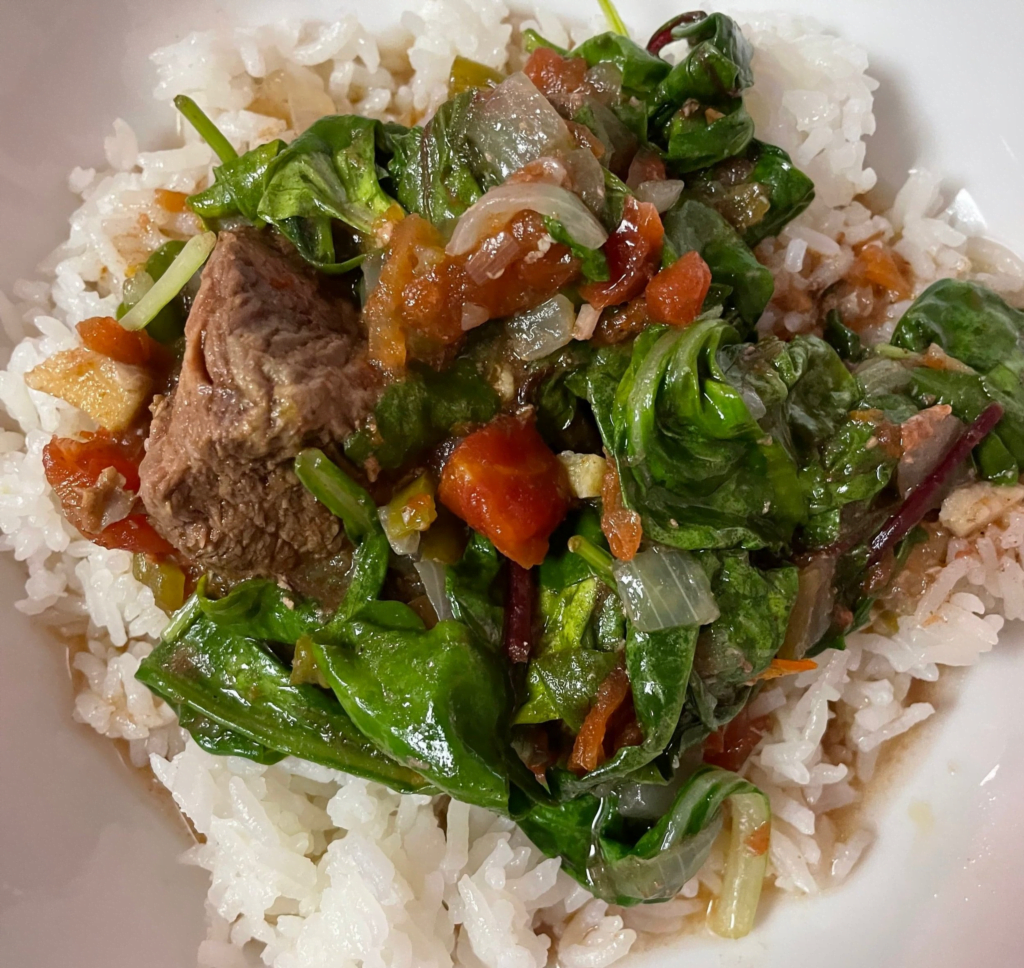
Romazava is a traditional Malagasy dish from Madagascar. It’s a meat stew that features a variety of greens and is known for its rich and flavorful broth.
History and Background
- Romazava is considered the national dish of Madagascar.
- The dish is believed to have originated from the central highlands of Madagascar.
- It’s traditionally consumed during special occasions and gatherings.
- The name “Romazava” is derived from two Malagasy words: “ro” meaning broth or soup, and “mazava” meaning clear, referring to the clear broth in which the ingredients are cooked.
Madagascar cuisine – Romazava Ingredients
Meats
- 500g beef, cut into chunks (traditionally zebu meat is used)
- 500g chicken, cut into pieces
- Optional: pork or other meats can also be added.
Greens
- 2 cups of anamamy leaves (or substitute with spinach)
- 2 cups of paracress (known locally as “anandrebaka” or “brèdes mafana”)
- 2 cups of mustard greens (or other available greens)
Other Ingredients
- 3 tablespoons cooking oil
- 3 tomatoes, chopped
- 4 cloves garlic, minced
- 1 onion, chopped
- 1 thumb-sized ginger, minced
- 3-4 cups water or beef broth
- Salt and pepper to taste
- 2-3 chili peppers (optional for added heat)
Madagascar cuisine – Romazava Recipe
Preparation
- Clean and chop the meats into bite-sized pieces.
- Wash and chop the greens, ensuring they are free from dirt and grit.
Cooking the Meat
- In a large pot, heat the cooking oil over medium heat.
- Add the chopped onions, garlic, and ginger. Sauté until the onions are translucent.
- Add the beef chunks and cook until they are browned on all sides.
- If using chicken, add the chicken pieces and cook until they are slightly browned.
- Add the chopped tomatoes and stir for a few minutes.
Making the Broth
- Pour in the water or beef broth to the pot.
- Bring the mixture to a boil, then reduce the heat to let it simmer.
- Season with salt and pepper.
- If you’re using chili peppers, you can add them now for a spicy kick. You can either chop them or add them whole, depending on your preference for heat.
Adding the Greens
- Once the meats are tender, start adding the greens.
- Begin with the toughest greens (like mustard greens) as they take longer to cook.
- Gradually add the other greens, with the most delicate ones (like spinach) added last.
- Let the stew simmer until all the greens are cooked and tender.
Final Steps
- Taste the broth and adjust the seasoning if necessary.
- Once everything is cooked to your liking, remove the pot from the heat.
Serving
- Romazava is traditionally served with rice.
- Ladle the stew over a bed of rice in a bowl or plate.
- Enjoy your meal!
Note: Like many traditional dishes, there are various regional and family variations of Romazava. Some might include different types of meats or greens, or additional spices. The above recipe is a basic version, and you can adjust it according to your preferences or based on the ingredients available to you.
Madagascar cuisine – Ravitoto

Ravitoto is a traditional dish from Madagascar, often referred to as cassava leaves stew. It’s a simple yet flavorful dish that showcases the island’s rich culinary heritage. The primary ingredient is pounded cassava leaves, which are cooked until tender and often combined with pork or other meats.
History and Background
- Origin: Ravitoto is believed to have originated from the Betsileo ethnic group in the central highlands of Madagascar.
- Popularity: It’s a staple dish in many Malagasy households and is often served during special occasions and gatherings.
- Variations: While the basic recipe involves cassava leaves and meat, there are regional variations across Madagascar.
Madagascar cuisine – Ravitoto Ingredients
- Cassava Leaves: About 500 grams, pounded or finely chopped. (If you can’t find fresh cassava leaves, frozen ones can be an alternative).
- Meat: 500 grams of pork (especially pork belly or ribs) or beef, cut into chunks. Some versions also use dried shrimp or fish.
- Coconut milk: 1 to 2 cups, depending on the desired richness.
- Oil: 2 tablespoons, preferably coconut oil.
- Onions: 1 large, finely chopped.
- Garlic: 3 to 4 cloves, minced.
- Ginger: 1-inch piece, minced or grated.
- Salt: To taste.
- Pepper: To taste.
- Water: As needed.
Madagascar cuisine – Ravitoto Recipe
Preparation of Cassava Leaves
- If using fresh cassava leaves, wash them thoroughly.
- Pound the leaves using a mortar and pestle until they become a paste-like consistency. Alternatively, you can use a food processor to finely chop them.
Meat Preparation
- In a large pot or pan, heat the oil over medium heat.
- Add the chunks of meat and brown them on all sides. Remove and set aside.
Sautéing
- In the same pot, add more oil if necessary.
- Add the chopped onions and sauté until translucent.
- Add the minced garlic and ginger. Continue to sauté for another 2-3 minutes until fragrant.
Cooking the Cassava Leaves
- Add the pounded or chopped cassava leaves to the pot.
- Return the browned meat to the pot.
- Add enough water to cover the mixture and bring it to a boil.
- Reduce the heat to low, cover the pot, and let it simmer for about 1 to 1.5 hours. The cassava leaves need a long cooking time to become tender and to remove any bitterness.
Adding Coconut Milk
- After the cassava leaves have become tender, pour in the coconut milk.
- Season with salt and pepper.
- Let the mixture simmer for another 20-30 minutes, allowing the flavors to meld together.
Madagascar cuisine – Serving Ravitoto
- Check the seasoning and adjust if necessary.
- Serve the Ravitoto hot with rice or another staple of your choice.
Enjoy your traditional Malagasy Ravitoto!
Madagascar cuisine – Akoho sy Voanio Recipe

The Akoho sy Voanio Recipe is a beloved Malagasy dish that translates to “Chicken with Coconut.” It’s a flavorful chicken curry-like dish that combines the rich taste of coconut milk with tender chicken pieces.
The dish reflects Madagascar’s unique blend of African, Asian, and Austronesian influences.
History and Background of the Akoho sy Voanio Recipe
- Origins: The exact origins of Akoho sy Voanio are not well-documented, but the use of coconut and spices in the dish hints at the Indian and Southeast Asian influences on Malagasy cuisine.
- Popularity: This dish is popular across Madagascar and can be found in many households and restaurants. It’s often served during special occasions and gatherings.
- Variations: While chicken is the primary protein, there are variations using fish or other meats. The level of spiciness and the combination of spices can also vary based on personal and regional preferences.
Madagascar cuisine – Akoho sy Voanio Ingredients
- Chicken: About 500 grams, cut into pieces.
- Coconut Milk: 2 cups (preferably freshly squeezed, but canned can also be used).
- Tomatoes: 2-3, chopped.
- Onions: 1 large, finely chopped.
- Garlic: 3-4 cloves, minced.
- Ginger: 1-inch piece, minced or grated.
- Green Chilies: 1-2, slit (optional, based on heat preference).
- Oil: 2 tablespoons.
- Salt: To taste.
- Pepper: To taste.
- Lime or Lemon Juice: 1 tablespoon.
- Fresh Coriander (Cilantro): A handful, chopped (for garnish).
Madagascar cuisine – Akoho sy Voanio Recipe
Marinating the Chicken
- In a bowl, combine the chicken pieces with salt, pepper, and lime or lemon juice.
- Mix well and let it marinate for at least 30 minutes.
Sautéing
- In a large pot or pan, heat the oil over medium heat.
- Add the chopped onions and sauté until translucent.
- Add the minced garlic, ginger, and green chilies (if using). Continue to sauté for another 2-3 minutes until fragrant.
Cooking the Chicken
- Add the marinated chicken pieces to the pot and brown them on all sides.
- Once browned, add the chopped tomatoes and cook until they break down and form a sauce.
Adding Coconut Milk
- Pour in the coconut milk and mix well.
- Season with additional salt and pepper if needed.
- Reduce the heat to low, cover the pot, and let it simmer for about 20-25 minutes, or until the chicken is fully cooked and tender.
Finishing Touches
- Check the seasoning and adjust if necessary.
- If you prefer a thicker sauce, you can simmer the dish uncovered for an additional 5-10 minutes to reduce the liquid.
- Garnish with chopped fresh coriander (cilantro).
Madagascar cuisine – Serving Akoho sy Voanio
- Akoho sy Voanio is best served hot with rice.
- It pairs well with pickled vegetables or a simple salad on the side.
Enjoy your traditional Malagasy Akoho sy Voanio!
Madagascan Cuisine – Lasary Voatabia

Lasary Voatabia is a traditional Malagasy dish that is essentially a tangy and spicy tomato and green onion chutney or relish. “Lasary” in Malagasy refers to a type of condiment or pickled side dish, and “voatabia” means green onions. This dish is often served as an accompaniment to main courses, adding a burst of flavor and freshness.
History and Background:
- Origins: The exact origins of Lasary Voatabia are not well-documented, but pickling and creating relishes are common culinary practices in many cultures. Given Madagascar’s diverse influences, it’s likely that this dish evolved as a fusion of various culinary traditions.
- Popularity: Lasary Voatabia is a common accompaniment in Malagasy meals. Its tangy and spicy flavor complements rice dishes and grilled meats.
- Variations: There are other types of “lasary” in Malagasy cuisine, such as lasary legumes (made with mixed vegetables) and lasary citron (made with lemon or lime).
Madagascar cuisine – Lasary Voatabia Ingredients
- Tomatoes: 4-5, finely chopped.
- Green Onions (Scallions): 1 bunch, finely chopped.
- Green Chilies: 1-2, finely chopped (adjust based on heat preference).
- Garlic: 2-3 cloves, minced.
- Ginger: A small piece, grated.
- Lime or Lemon Juice: 2-3 tablespoons.
- Salt: To taste.
- Sugar: 1 teaspoon (optional, to balance the acidity).
- Oil: 1 tablespoon (optional, some versions use oil for a richer texture).
- Fresh Coriander (Cilantro): A handful, chopped (optional for garnish).
Madagascar cuisine – Lasary Voatabia Recipe
Preparation
- Wash and finely chop the tomatoes, green onions, and green chilies.
- Mince the garlic and grate the ginger.
Mixing
- In a mixing bowl, combine the chopped tomatoes, green onions, green chilies, minced garlic, and grated ginger.
- Add the lime or lemon juice, salt, and sugar (if using). Mix well.
- If you’re using oil, heat it in a pan until it’s hot but not smoking, then pour it over the mixture. This can give the lasary a slightly cooked flavor and richer texture.
Marinating
- Cover the bowl and let the mixture sit for at least an hour, allowing the flavors to meld. You can refrigerate it if you’re marinating for a longer time.
Serving Lasary Voatabia
- Before serving, check the seasoning and adjust if necessary.
- Garnish with chopped fresh coriander (cilantro) if desired.
- Lasary Voatabia is typically served cold or at room temperature as a side dish or condiment.
Enjoy your traditional Malagasy Lasary Voatabia with rice dishes, grilled meats, or even as a zesty topping for bread or crackers!
Madagascar cuisine – Koba

Koba (sometimes referred to as “Koba Akondro”) is a traditional sweet treat from Madagascar. It’s a type of cake or steamed snack made primarily from ground peanuts, sugar, and mashed bananas, and then wrapped in banana leaves before being steamed or baked. The result is a dense, sweet, and nutty delicacy that’s often enjoyed during special occasions and celebrations.
History and Background
- Origins: The exact origins of Koba are not well-documented, but it’s believed to have been a part of Malagasy cuisine for centuries. The ingredients reflect the agricultural products commonly found on the island.
- Popularity: Koba is a popular snack found throughout Madagascar. It’s often sold by street vendors, especially in rural areas, and is a favorite treat during trips or as a gift when visiting someone.
- Cultural Significance: Koba is often associated with special occasions and is sometimes made during Malagasy festivals and celebrations.
Madagascar cuisine – Koba Ingredients
- Raw Peanuts: 500 grams, finely ground.
- Ripe Bananas: 4-5, mashed.
- Brown Sugar or Raw Sugar: 500 grams.
- Rice Flour: 250 grams.
- Vanilla Extract: 1 teaspoon (or use a vanilla pod).
- Banana Leaves: For wrapping. If unavailable, you can use aluminum foil, but banana leaves give a distinct flavor.
- Salt: A pinch.
- Water: As needed.
Madagascar cuisine – Koba Recipe
Preparation
- Clean the banana leaves by wiping them with a damp cloth. If they are stiff, quickly pass them over an open flame to make them more pliable. This will prevent them from breaking when wrapping the mixture.
- Mash the ripe bananas in a large mixing bowl.
Making the Koba Mixture
- In the bowl with mashed bananas, add the finely ground peanuts, rice flour, sugar, vanilla extract, and a pinch of salt. Mix everything together until well combined. You should get a thick, sticky dough-like consistency. If it’s too dry, you can add a little water.
Wrapping
- Lay out a banana leaf and place a portion of the Koba mixture in the center. Shape it into a log or cylinder.
- Fold the banana leaf around the mixture, ensuring it’s tightly wrapped. Secure the ends with kitchen twine or toothpicks.
- Repeat with the remaining mixture.
Cooking
- Place the wrapped Koba in a steamer. If you don’t have a steamer, you can use a large pot with a trivet or an inverted bowl at the bottom. Add water to the pot but ensure the water level is below the trivet or bowl.
- Cover the pot and steam the Koba for about 4-5 hours. Ensure the water doesn’t run out by occasionally checking and adding more boiling water as needed.
- The Koba is ready when it is firm, and the color deepens to a darker shade.
Cooling and Serving Koba
- Once cooked, remove the Koba from the steamer and let it cool.
- Once cooled, you can slice it into rounds and serve.
- Koba is quite rich and dense, so a little goes a long way.
- Enjoy it with a cup of tea or coffee.
Enjoy your traditional Malagasy Koba!
Madagascar cuisine – Mofo Akondro
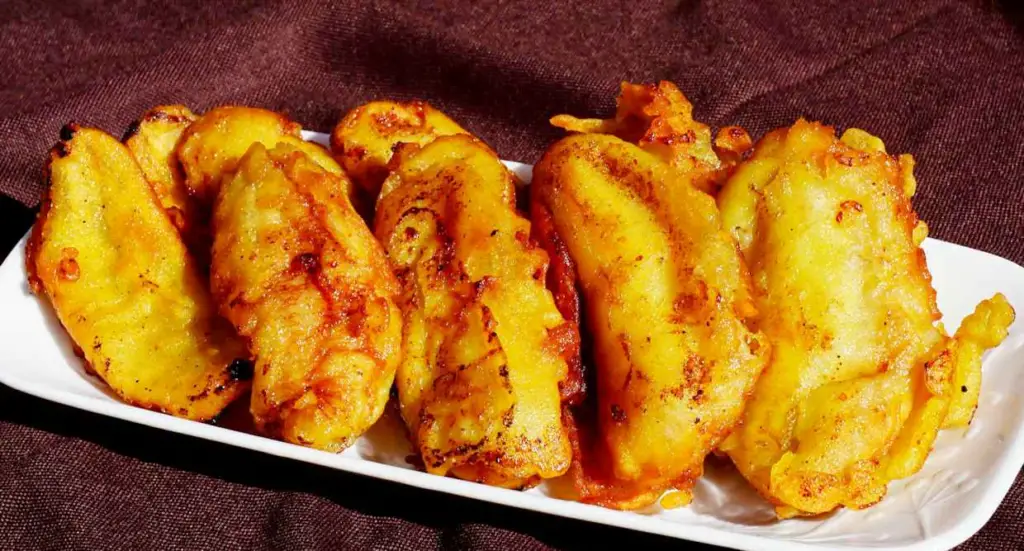
Mofo Akondro, also known as Malagasy Banana Fritters, is a popular snack or breakfast item in Madagascar. “Mofo” means bread or cake in Malagasy, and “akondro” is the word for banana. These fritters are a delightful combination of ripe bananas and a simple batter, deep-fried to golden perfection.
History and Background
- Origins: The exact origins of Mofo Akondro are not well-documented, but bananas are a staple fruit in Madagascar, and various forms of banana-based dishes can be found throughout the island.
- Popularity: Mofo Akondro is commonly sold by street vendors, especially in the morning as a breakfast item. It’s a quick and affordable snack that’s loved by many.
- Variations: Some variations might include additional ingredients like grated coconut or chocolate chips for added flavor.
Madagascar cuisine – Mofo Akondro Ingredients
- Ripe Ban : 4-5, mashed.
- All-purpose Flour: 1 cup.
- Sugar: 2-3 tablespoons (adjust based on the sweetness of the bananas and personal preference).
- Baking Powder: 1 teaspoon.
- Salt: A pinch.
- Vanilla Extract: 1 teaspoon (optional).
- Water: As needed to make a batter.
- Oil: For deep frying.
Madagascar cuisine – Mofo Akondro Recipe
Preparation
- In a mixing bowl, mash the ripe bananas using a fork or a potato masher until smooth.
- Add sugar to the mashed bananas and mix well.
Making the Batter
- In a separate bowl, combine the all-purpose flour, baking powder, and salt.
- Gradually add this dry mixture to the mashed bananas, mixing continuously to avoid lumps. If the mixture is too thick, you can add a little water to achieve a batter consistency similar to pancake batter.
- If using, add the vanilla extract and mix well.
Frying
- Heat oil in a deep frying pan over medium heat. You’ll need enough oil to submerge the fritters.
- Once the oil is hot, drop spoonfuls of the batter into the oil. Be careful not to overcrowd the pan.
- Fry the fritters until they are golden brown on all sides, which should take about 3-4 minutes.
- Use a slotted spoon to remove the fritters from the oil and drain them on paper towels to remove excess oil.
Serving Mofo Akondro
- Mofo Akondro is best served warm. They can be enjoyed on their own or with a side of fresh fruit or a drizzle of honey or chocolate sauce for added sweetness.
Enjoy your Malagasy Mofo Akondro!
Conclusion
In conclusion, my journey through Madagascan cuisine has been a truly unforgettable experience. From exploring the diverse range of flavors and cooking techniques to delving into the cultural significance of food in Malagasy celebrations, I have gained a deeper appreciation for this unique and vibrant cuisine.
I encourage you to embark on your own culinary adventure and discover the authentic Madagascan dishes and recipes that are just waiting to be savored. Whether you’re a fan of spicy, savory, or sweet flavors, Madagascan cuisine has something to offer everyone.
So gather your ingredients, fire up your stove, and join me in exploring the rich tapestry of flavors that define Madagascan cuisine. It’s a journey you won’t want to miss!
FAQ’s
What is Madagascar cuisine?
Madagascan cuisine refers to the traditional food and cooking techniques found in Madagascar, an island nation off the coast of East Africa. Madagascar’s rich cultural heritage and abundant natural resources influence it.
What are the characteristics of Madagascar Cuisine?
Madagascar cuisine is a unique blend of African, Asian, and European influences. Rice is the staple food, accompanied by various meats, vegetables, and spices. Traditional dishes include Romazava (beef stew), Ravitoto (pork with cassava leaves), and Laoka (side dishes). Seafood also plays a significant role in the island’s culinary culture.
What are some popular traditional Madagascan dishes?
Some popular traditional Madagascan dishes include Romazava, a beef stew with local greens; Akoho sy Voanio, a chicken dish with coconut milk and spices; and Ravitoto, a dish made with cassava leaves and pork.
What are the common ingredients used in Madagascan cooking?
Common ingredients used in Madagascan cooking include rice, seafood, local spices, vegetables, and tropical fruits. These ingredients contribute to the unique and diverse flavors found in Madagascan cuisine.
How does Madagascan cuisine reflect Malagasy food culture?
Madagascan cuisine reflects Malagasy food culture through its use of local ingredients, traditional cooking techniques, and the importance of food in celebrations and rituals. It is deeply intertwined with the cultural identity of the Malagasy people.
Can I find Madagascan cuisine outside of Madagascar?
While Madagascan cuisine may not be as widely available as some other international cuisines, you may be able to find Madagascan restaurants or dishes influenced by Madagascan flavors in certain places. It is always worth seeking out local restaurants or food events that feature international cuisines.
Where can I learn more about Madagascan cuisine and recipes?
There are various online resources, cookbooks, and food blogs that provide information and recipes for Madagascan cuisine. Exploring these sources can help you further immerse yourself in the flavors and techniques of Madagascan cooking.
Madagascan Food
Madagascan food is known for its unique blend of flavors influenced by various cultures. Traditional dishes often feature rice as a staple, accompanied by locally sourced ingredients such as zebu meat, seafood, and tropical fruits.
Common dishes include romazava, a green leafy stew, and ravitoto, a dish made with cassava leaves and pork.

